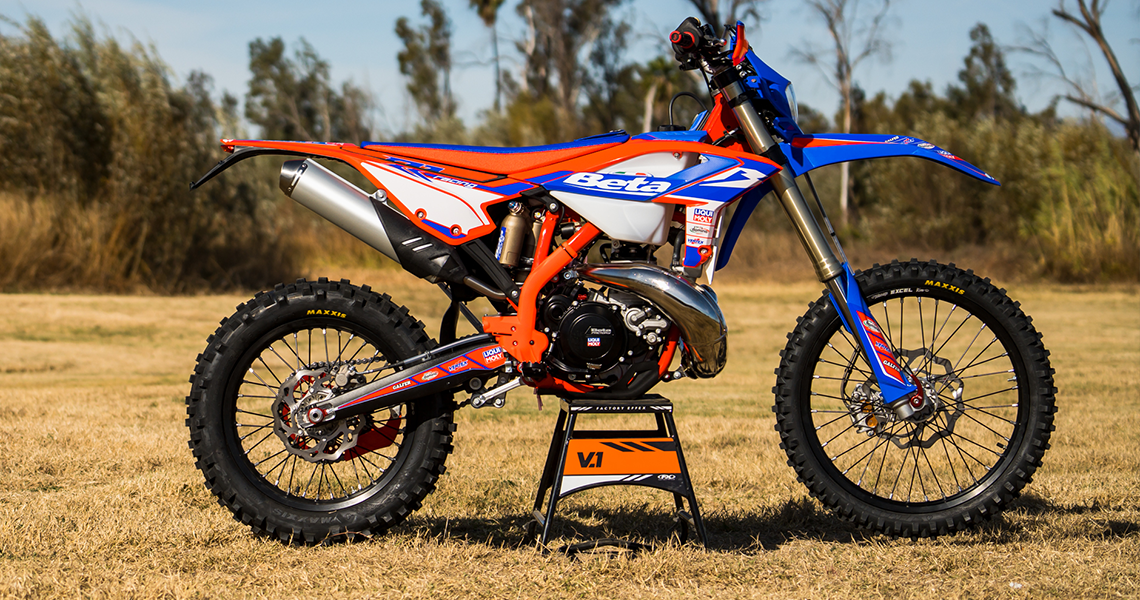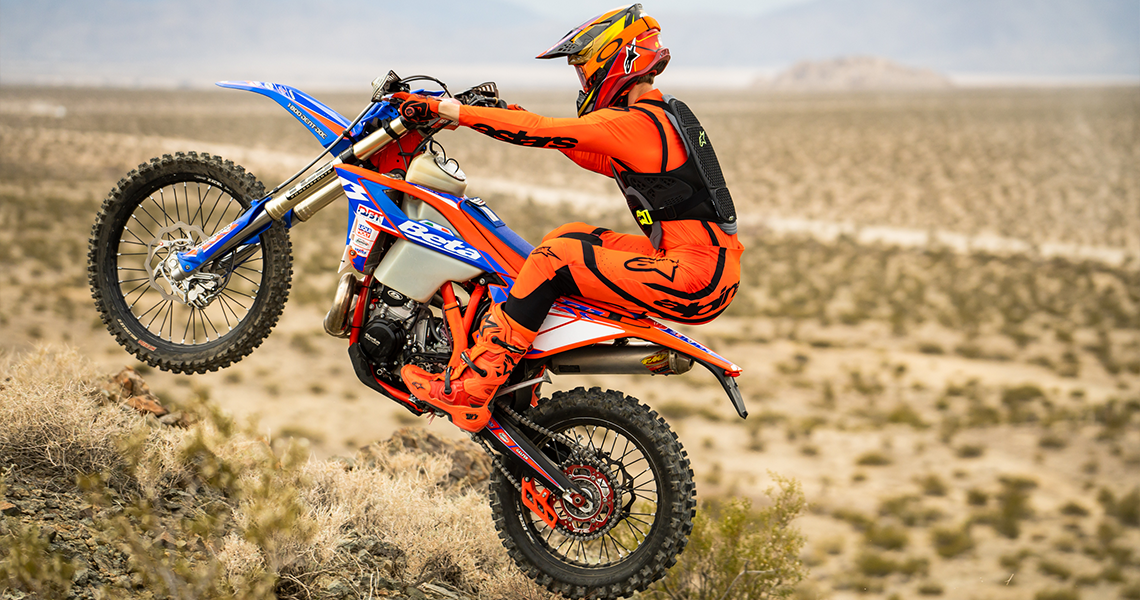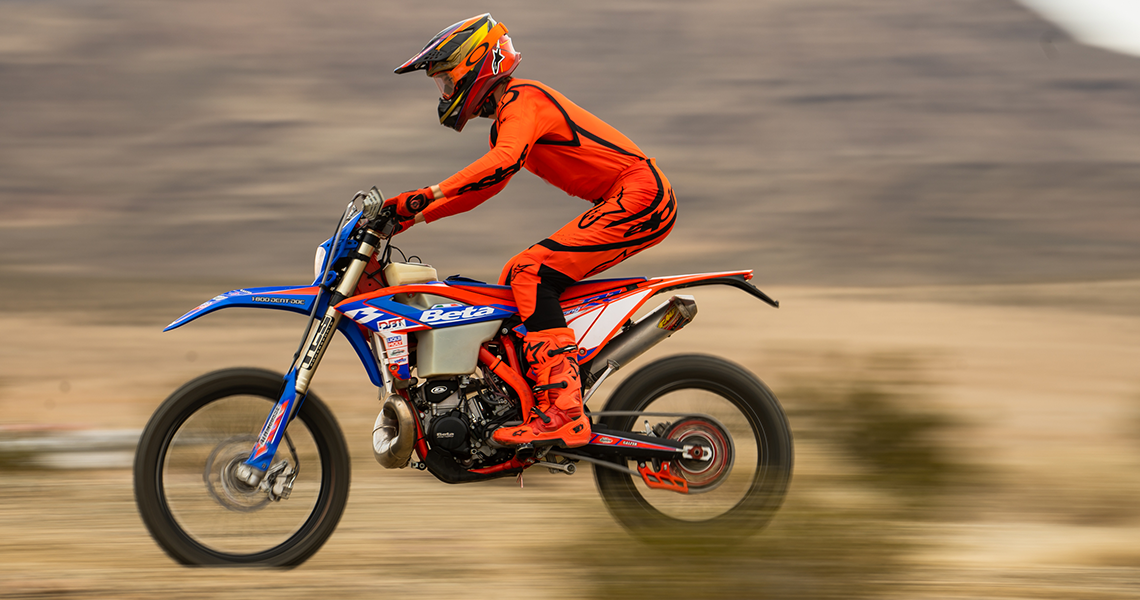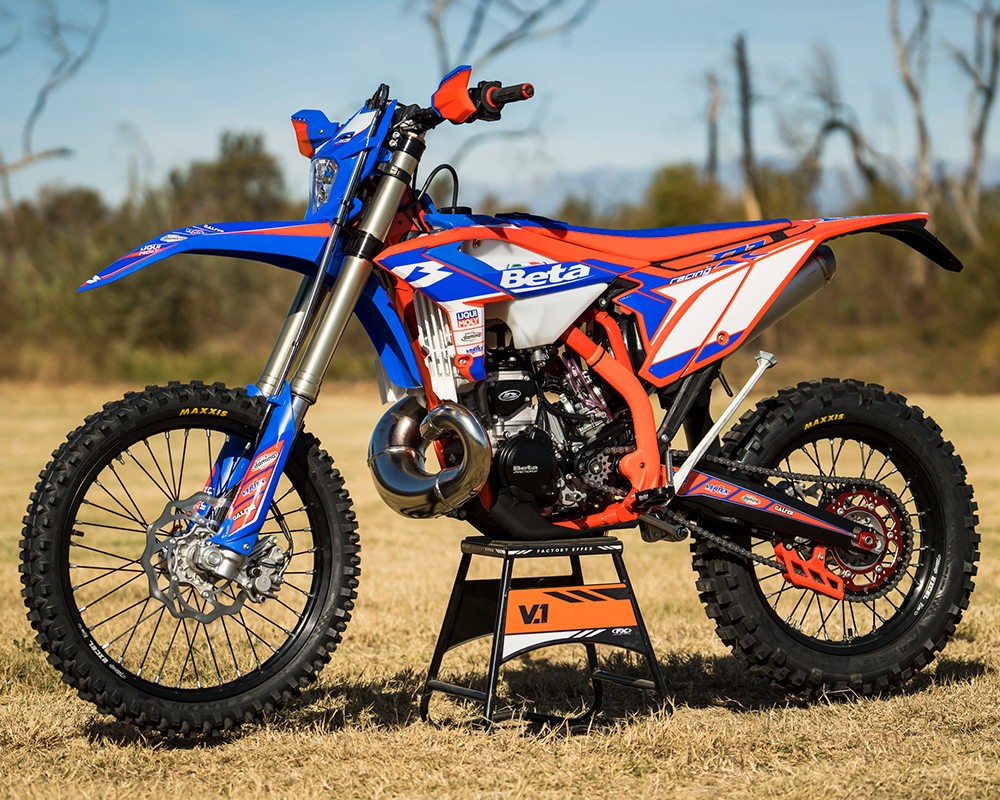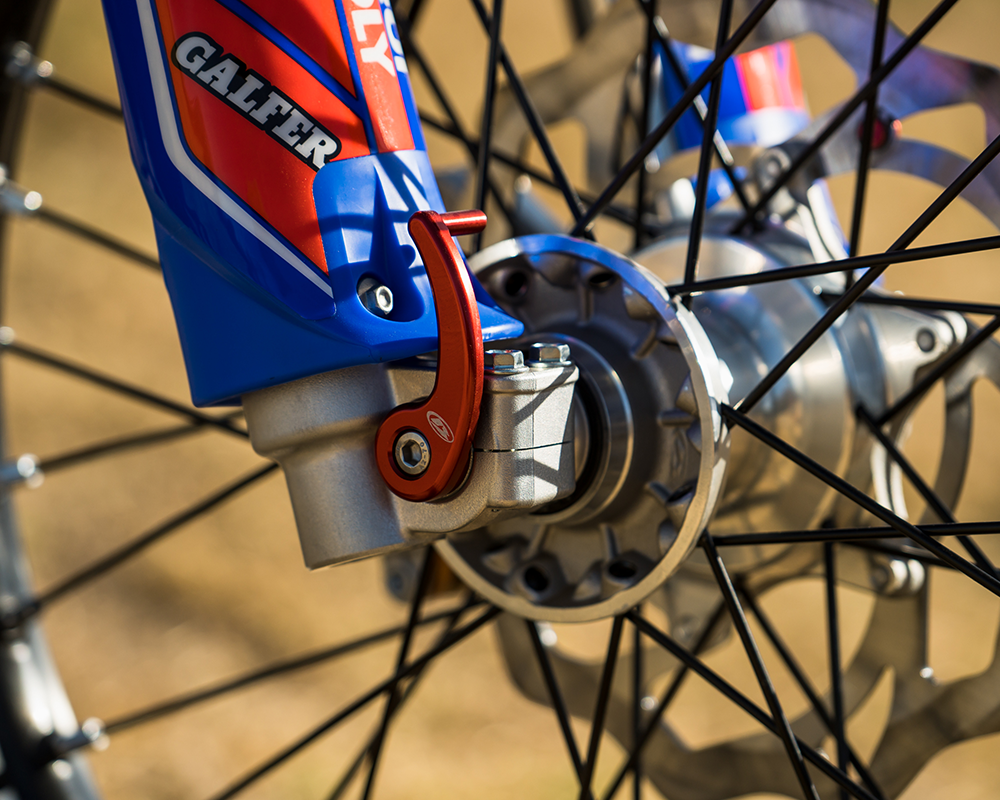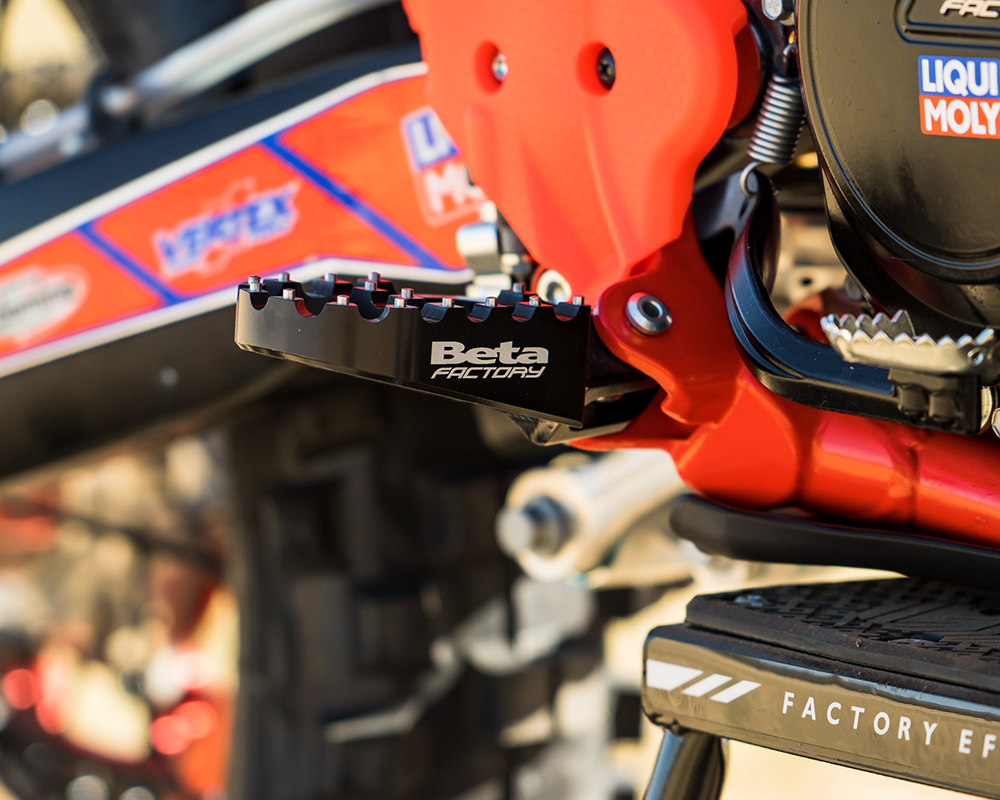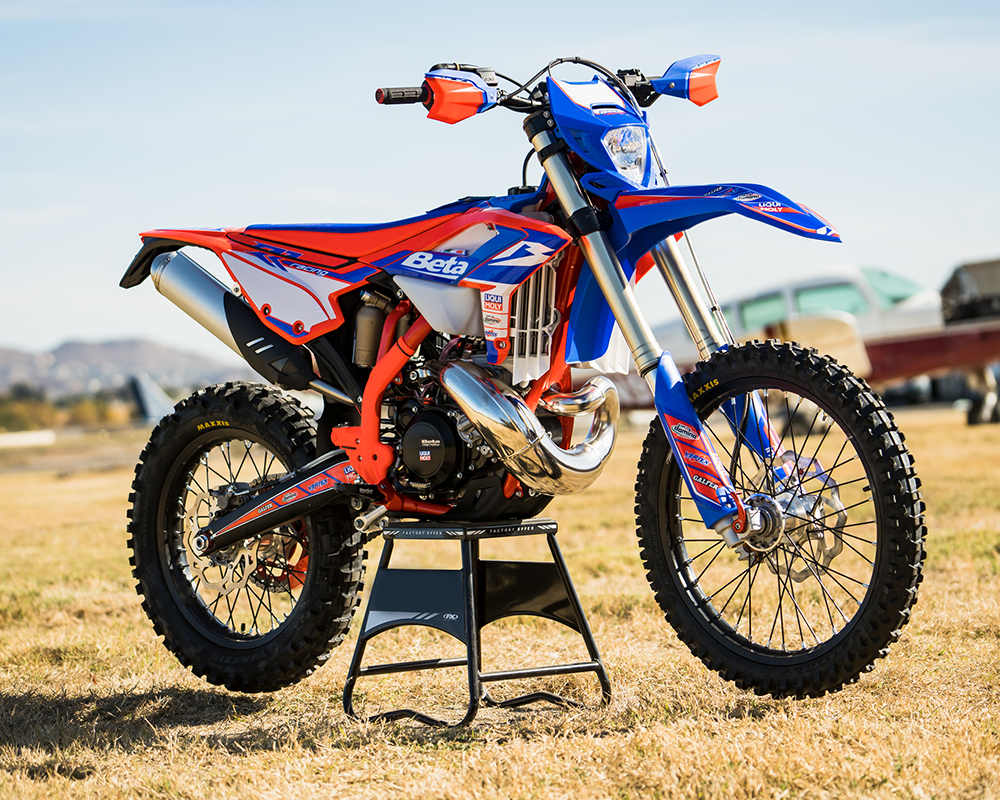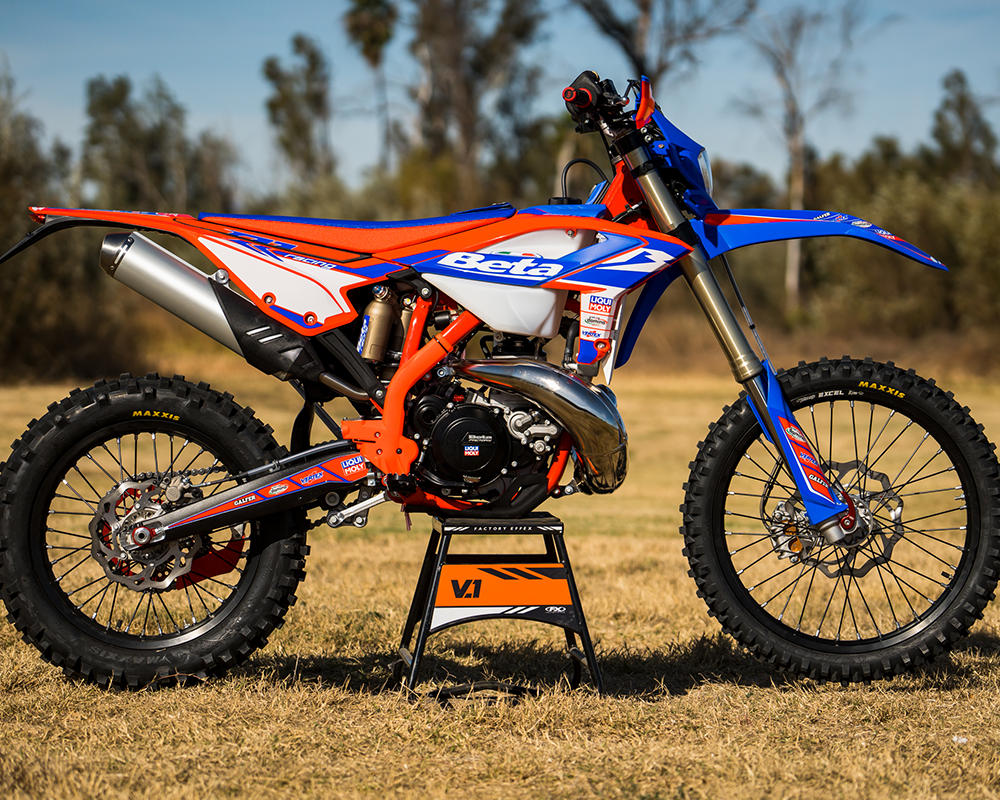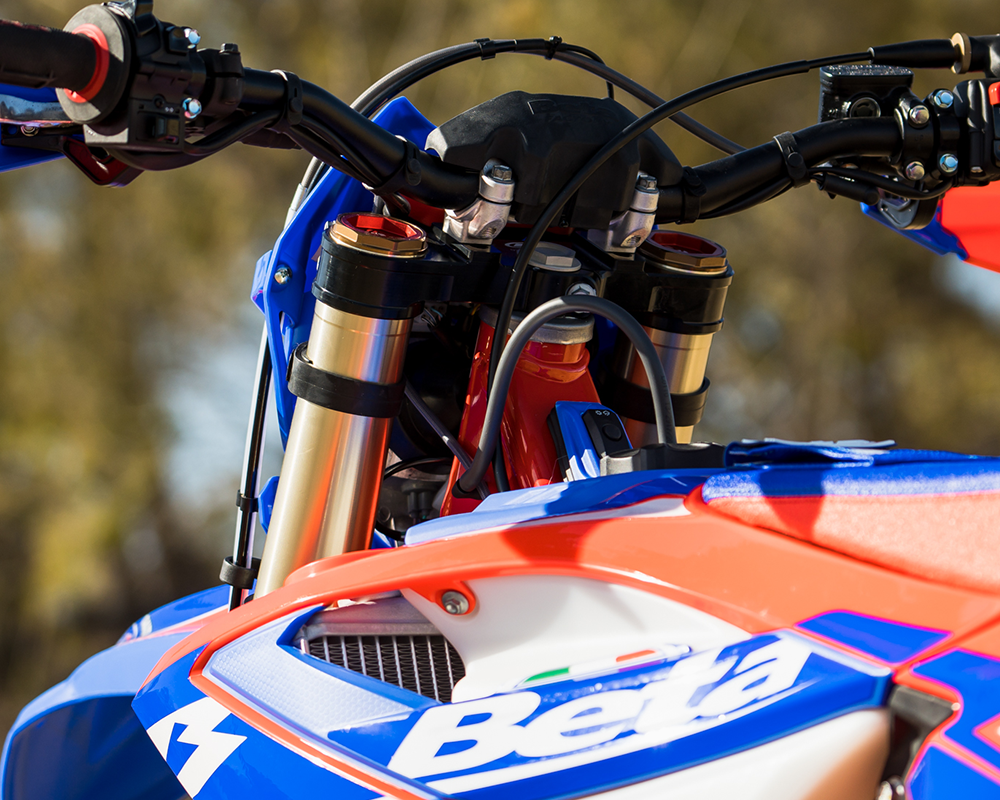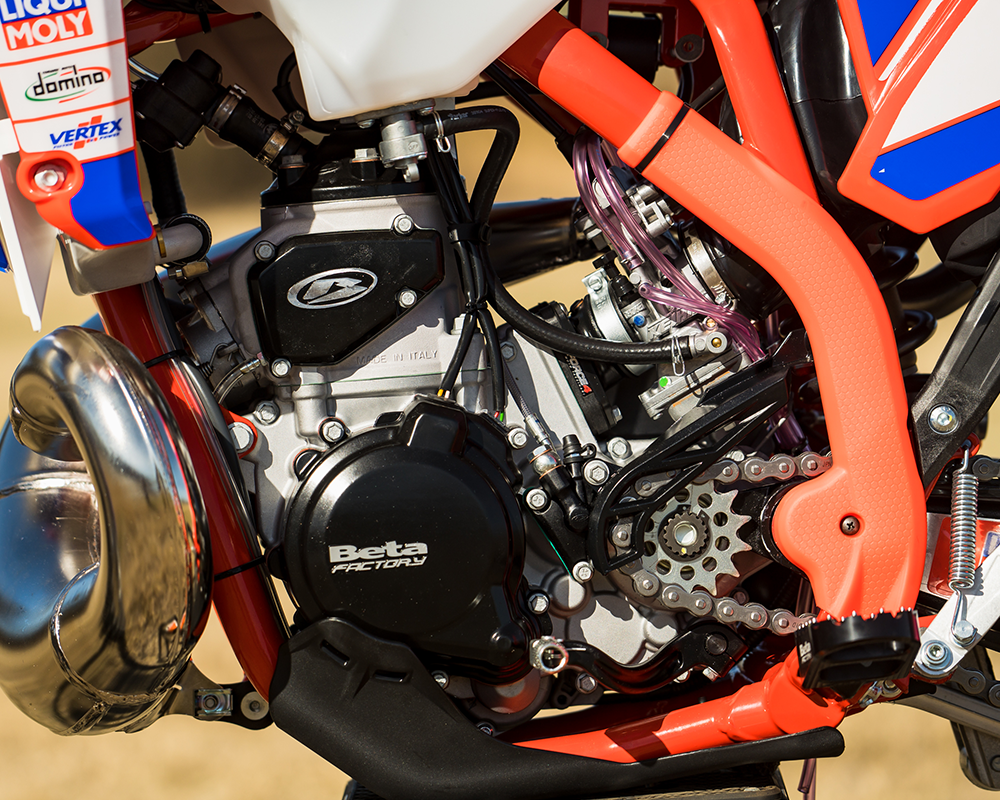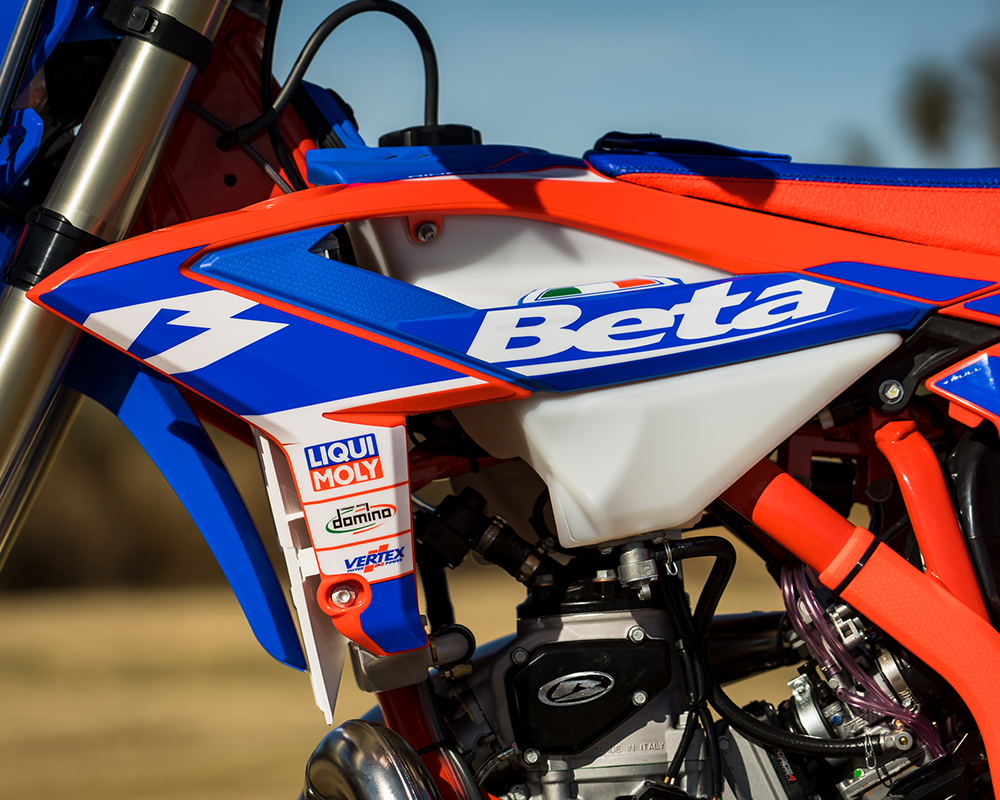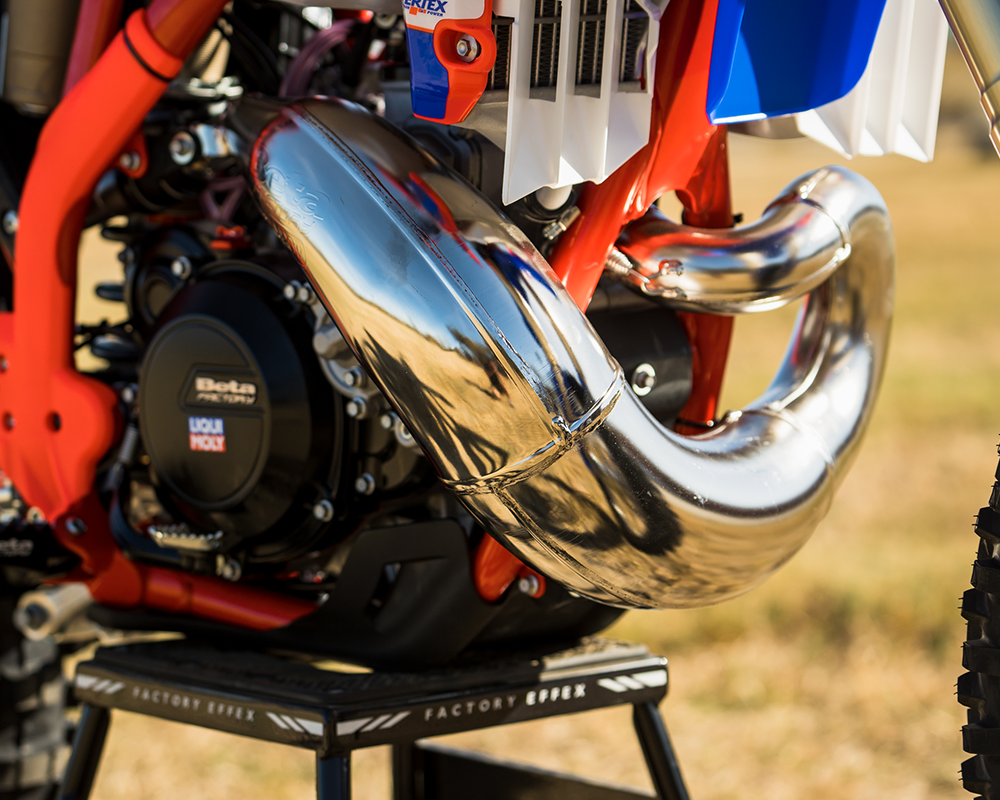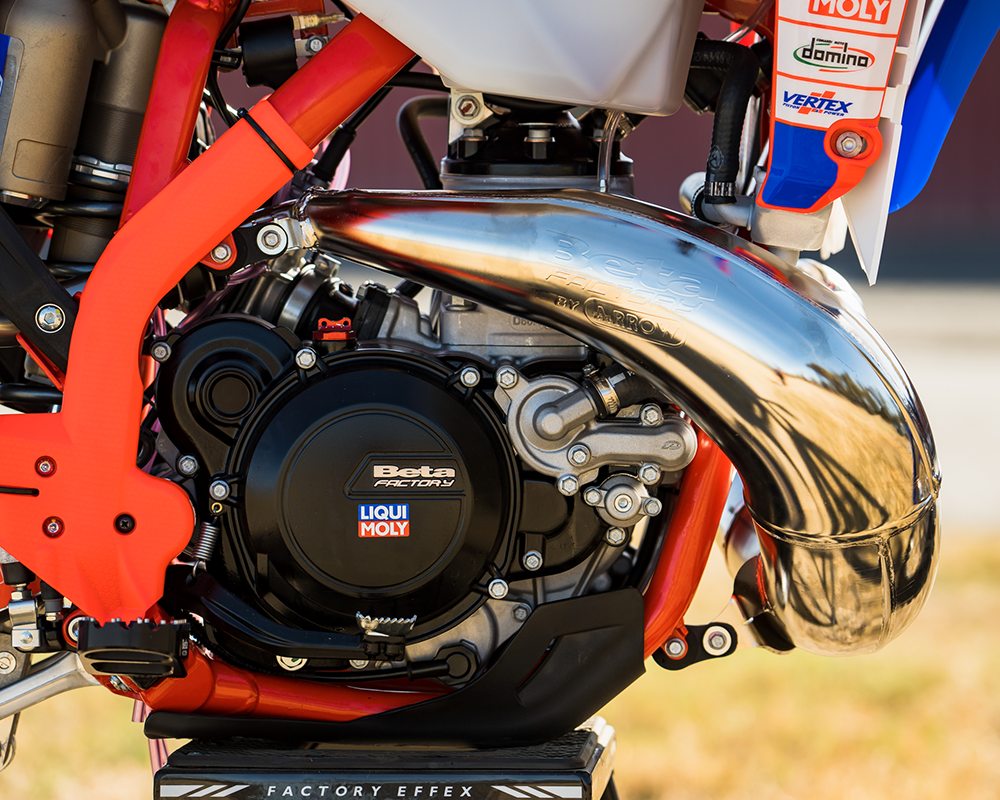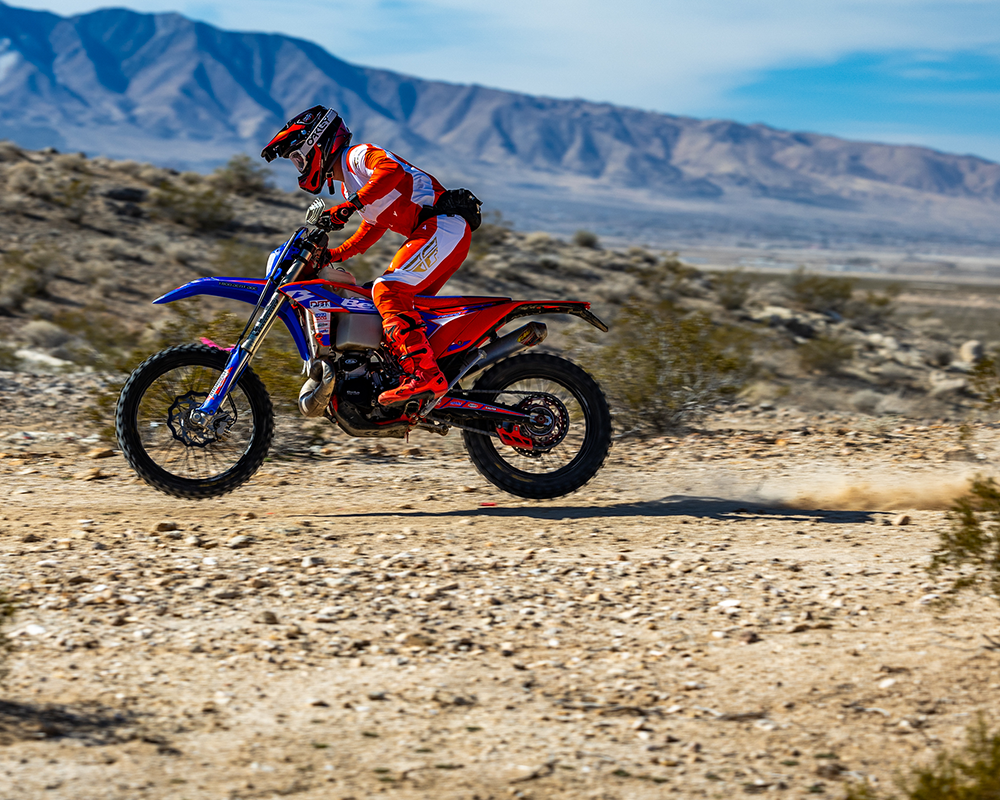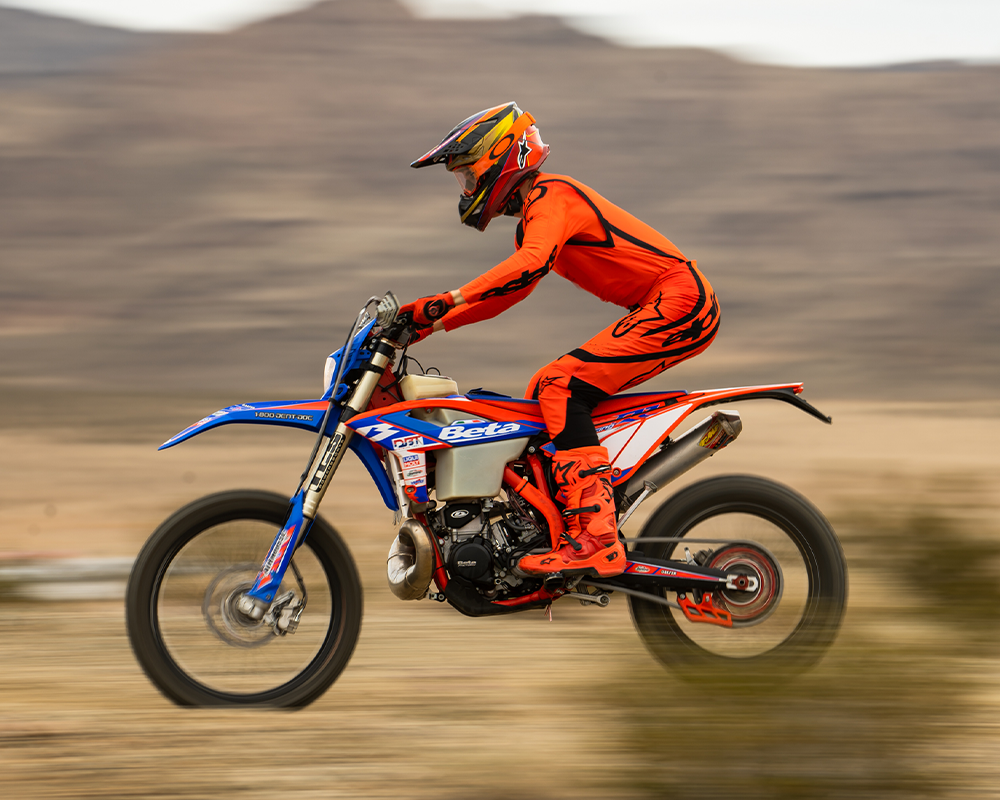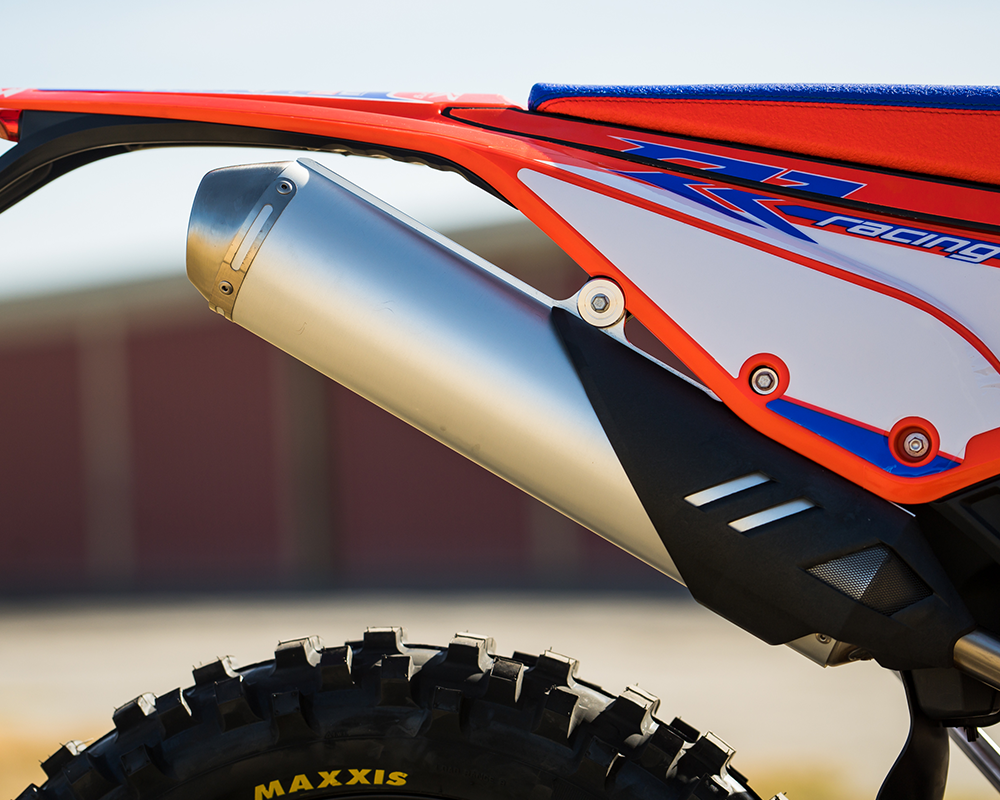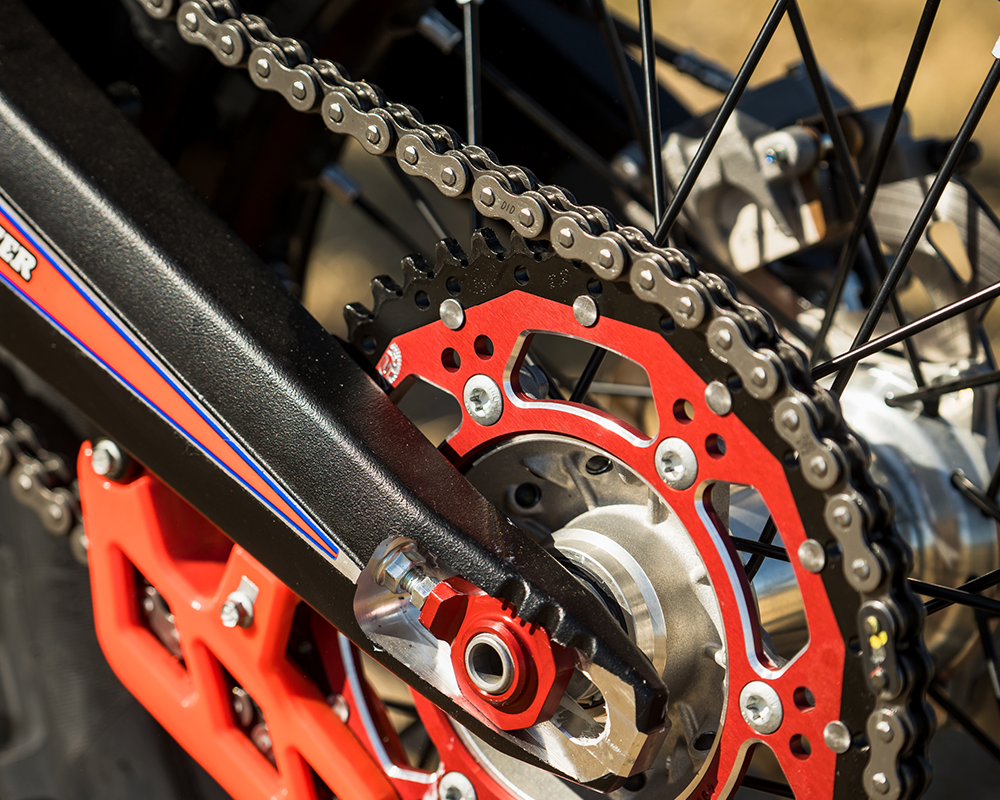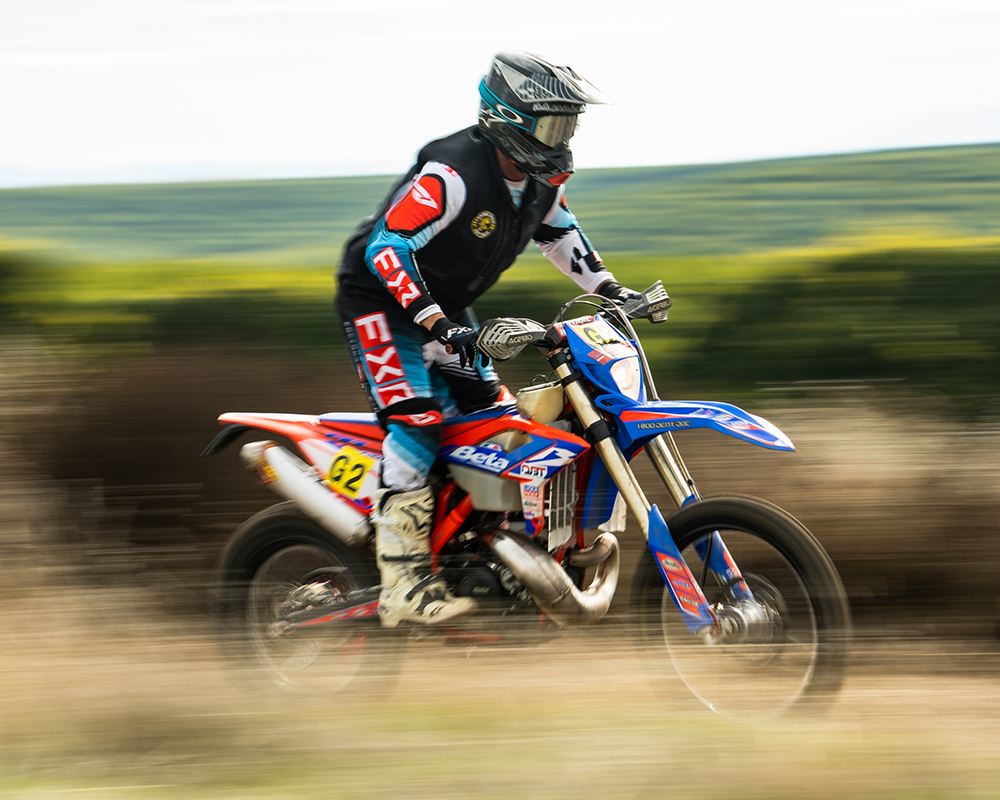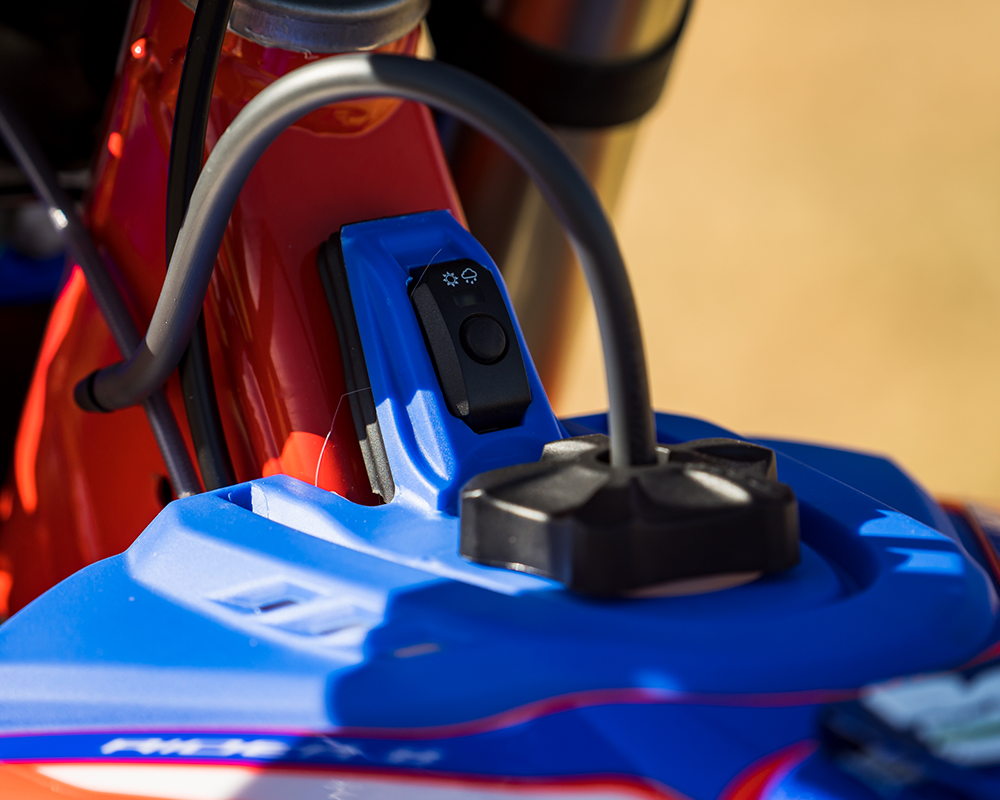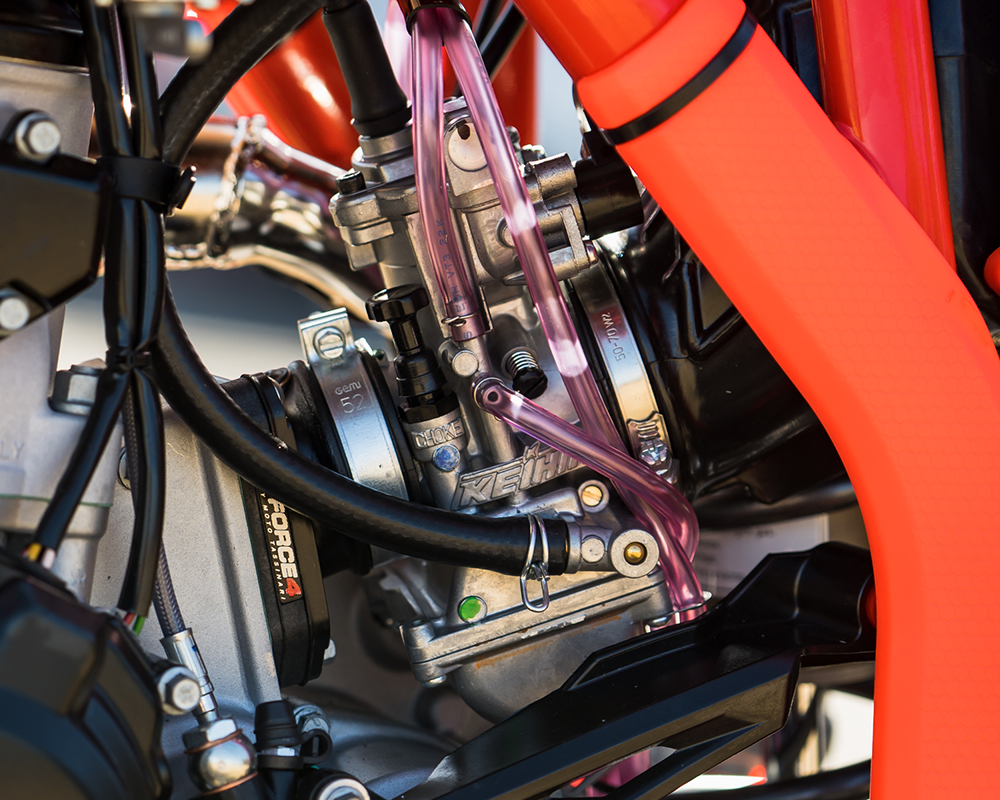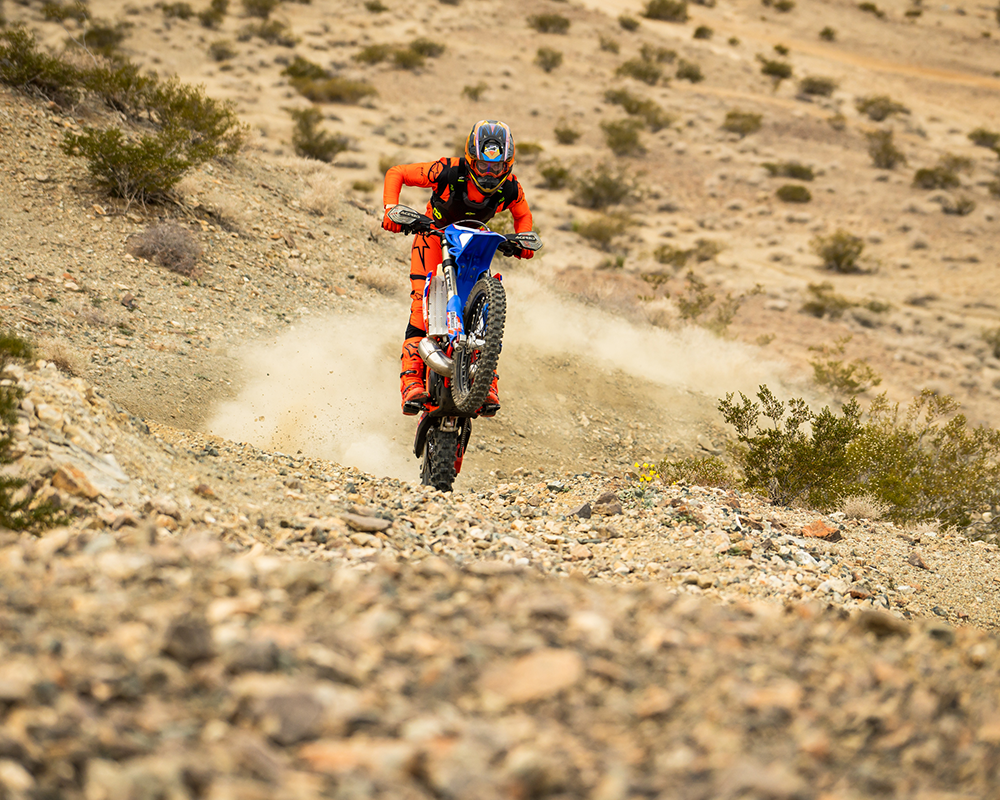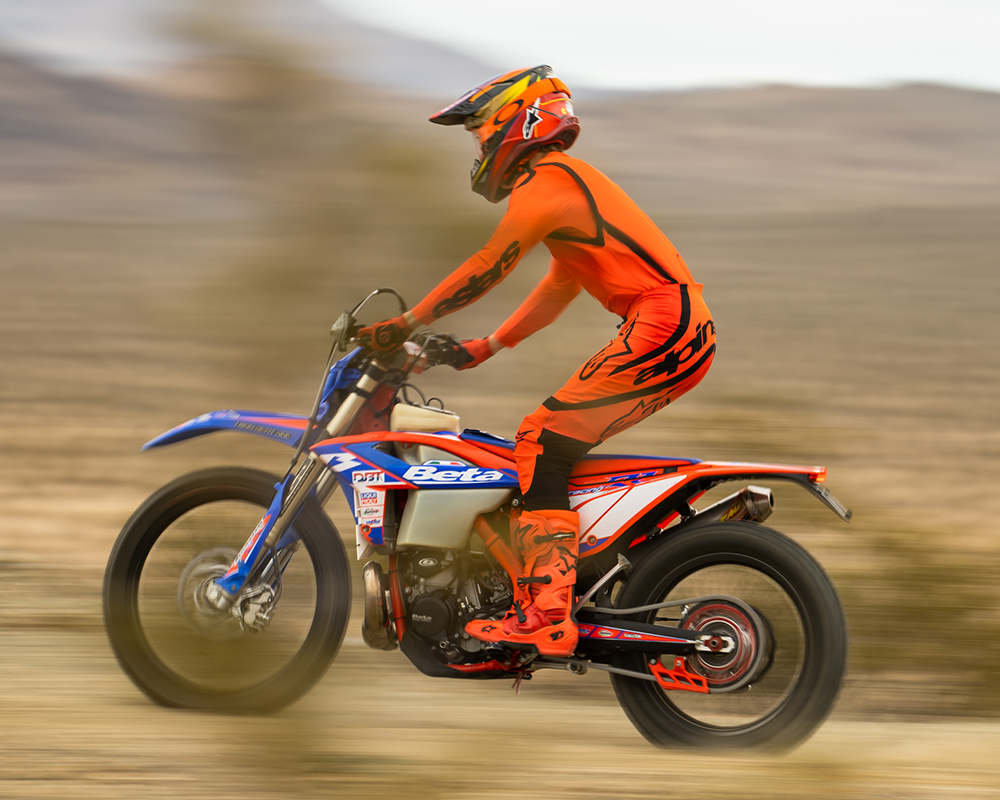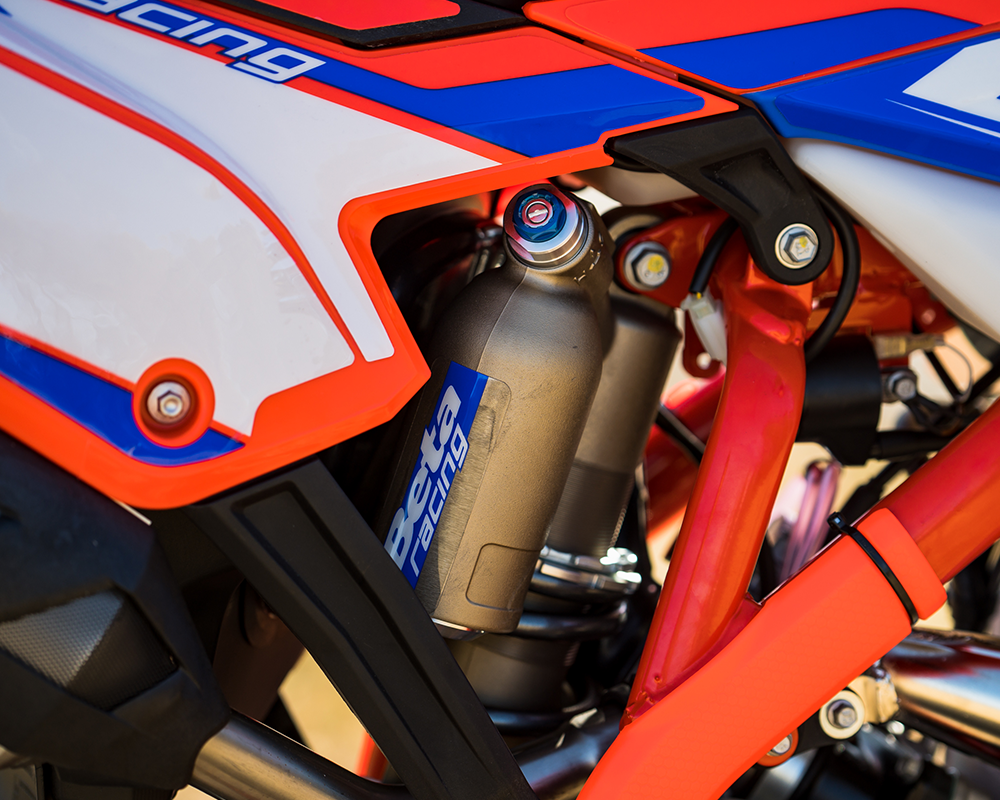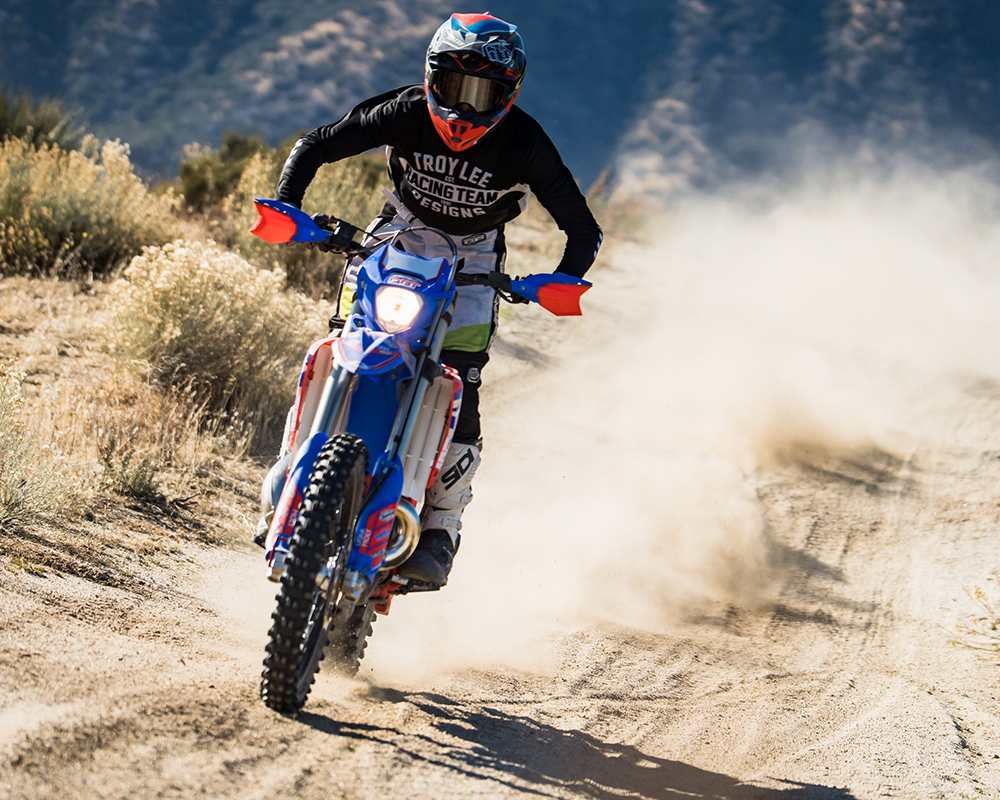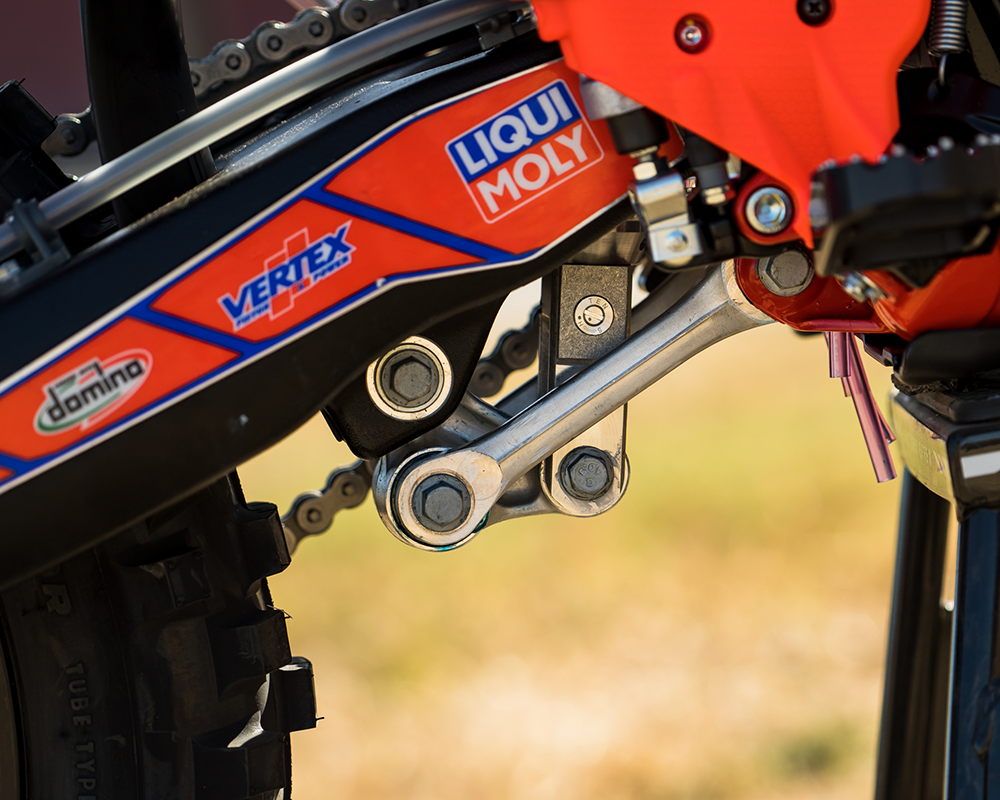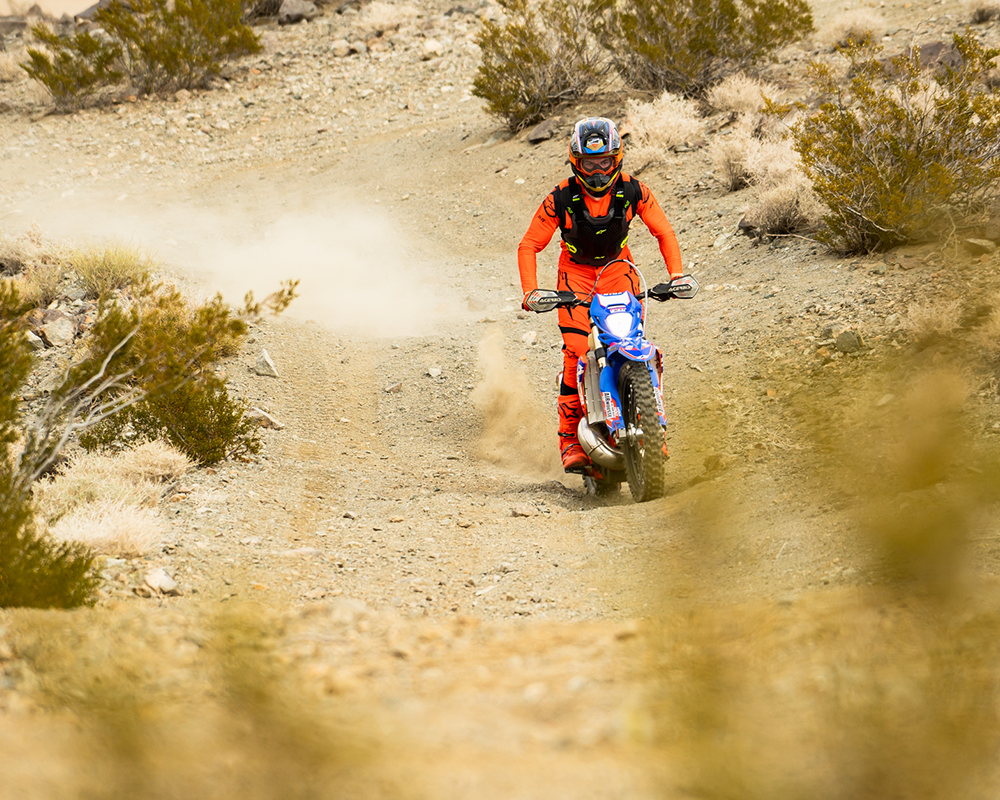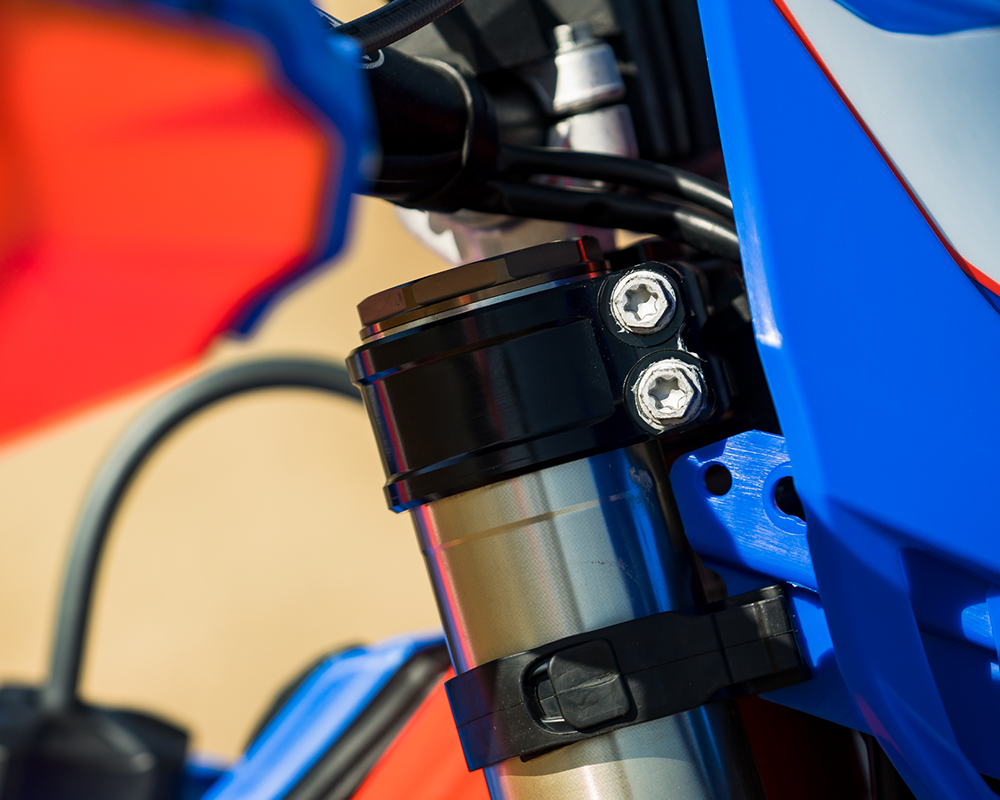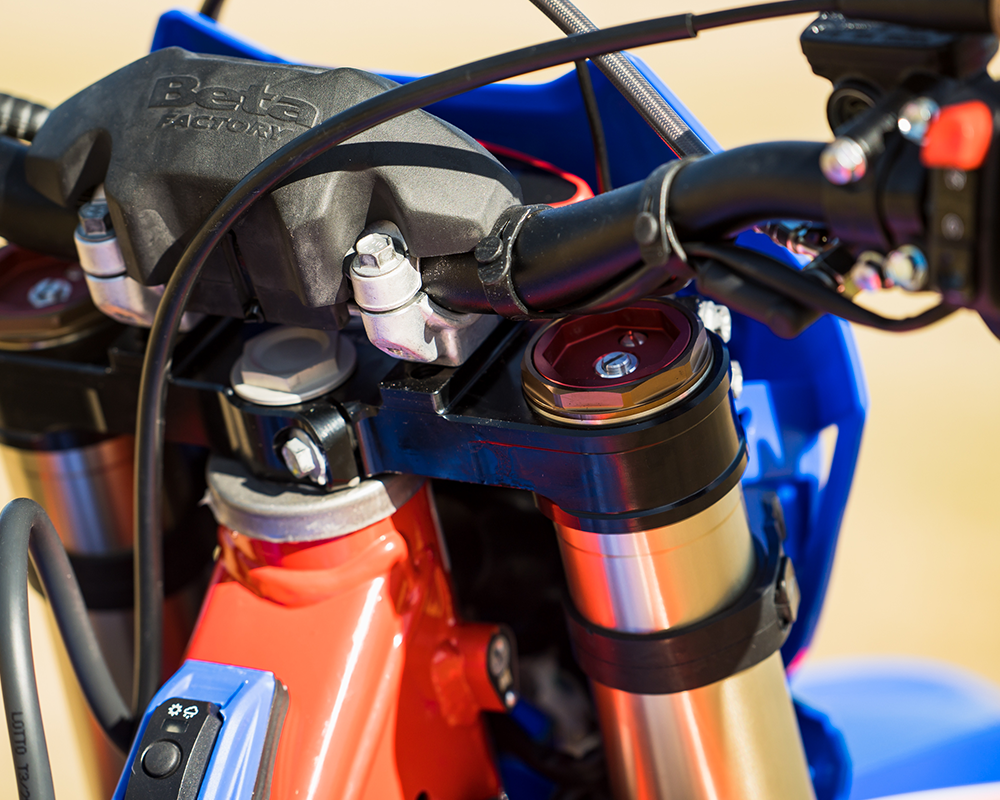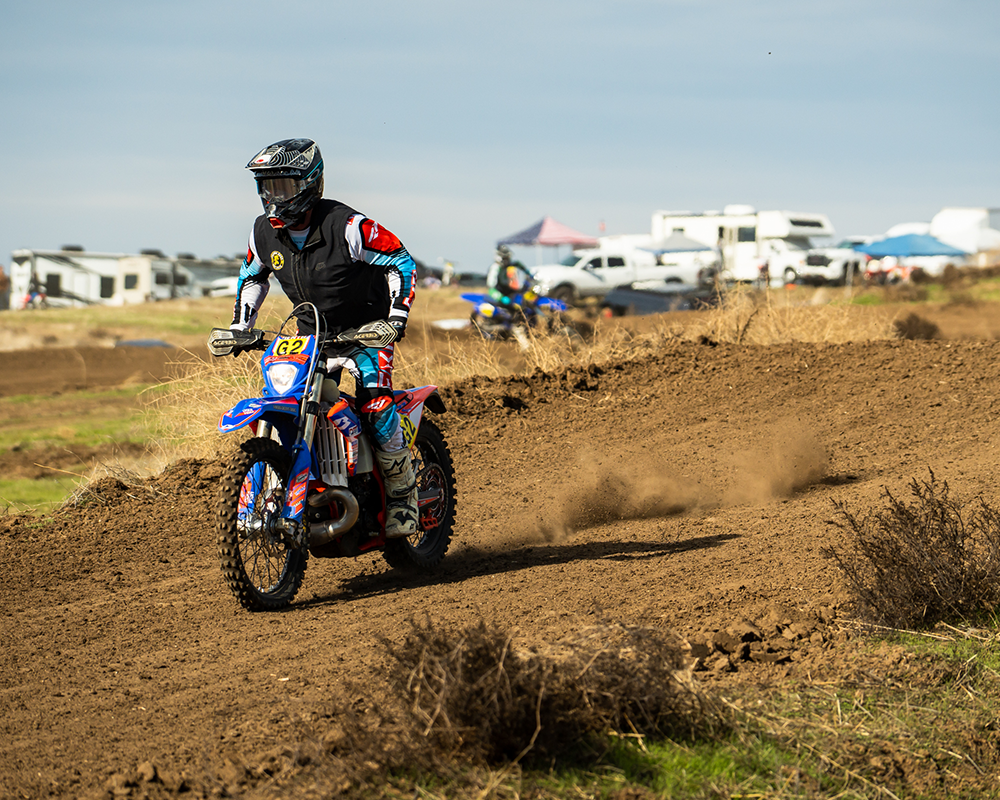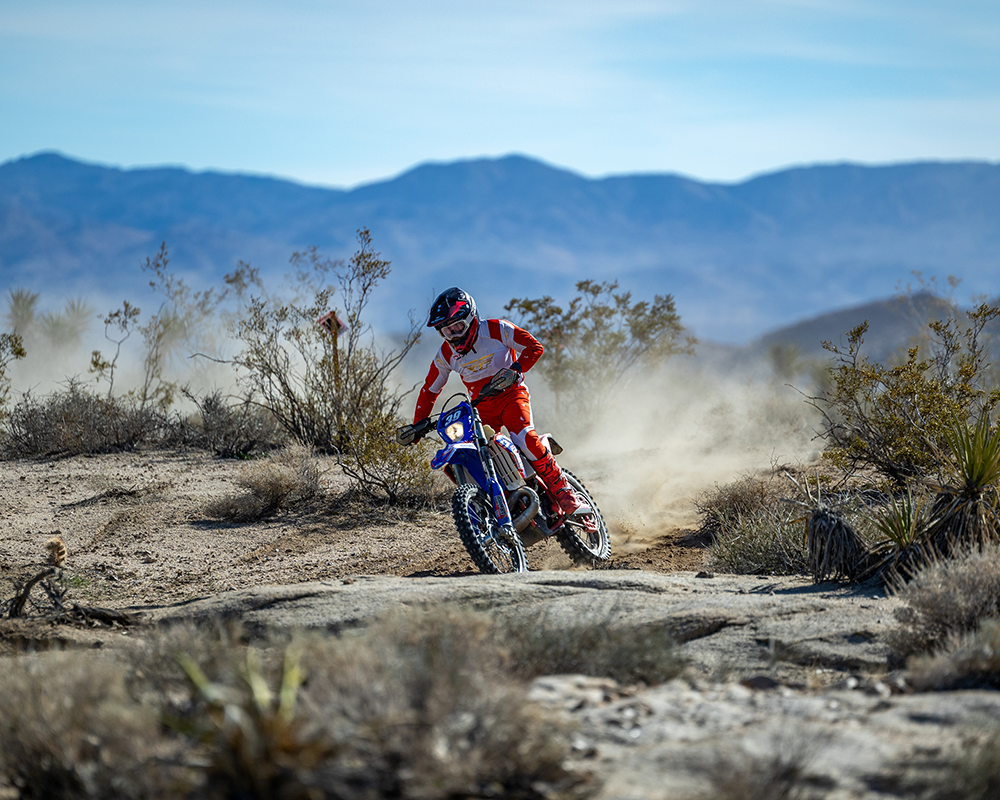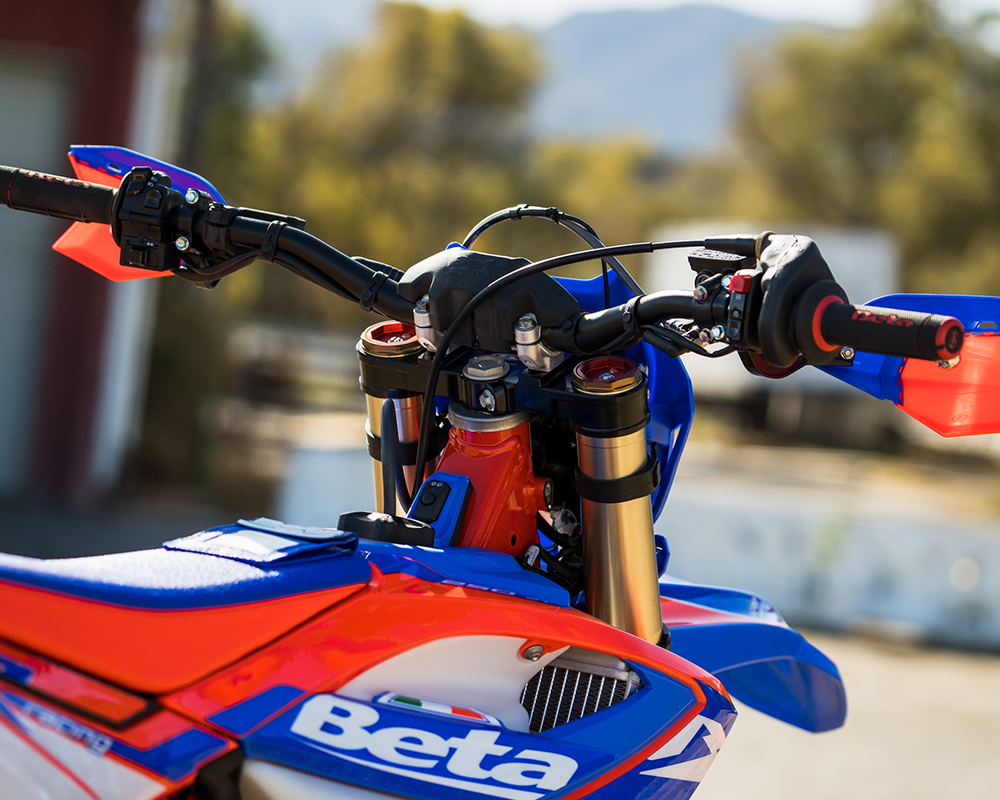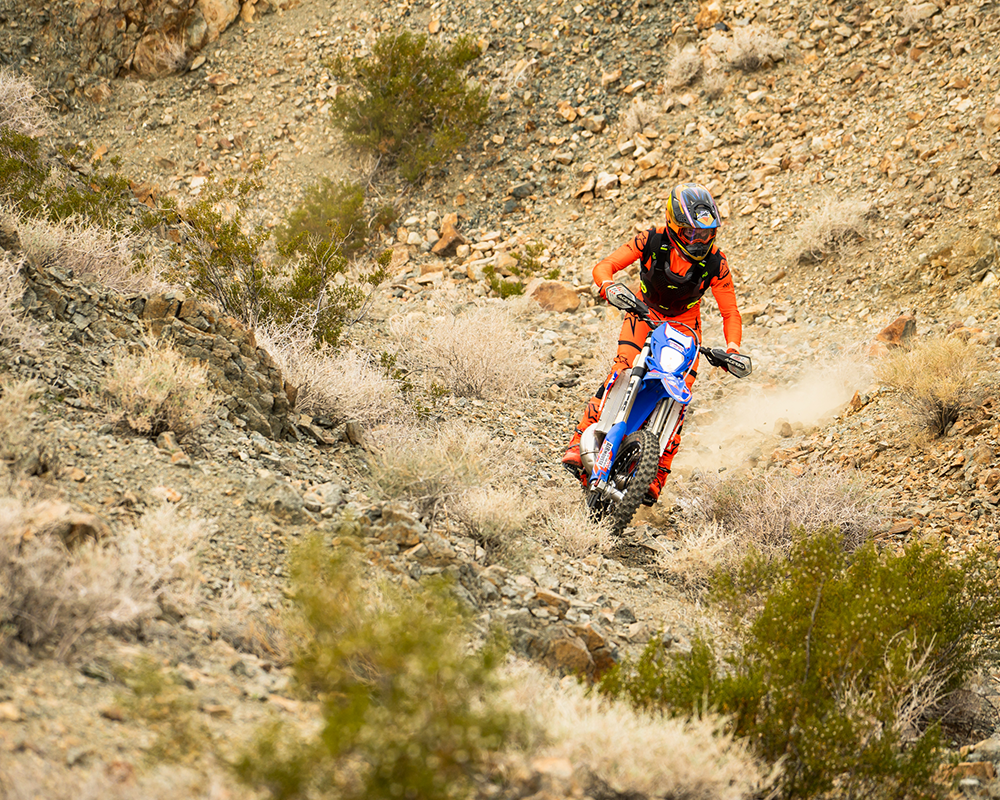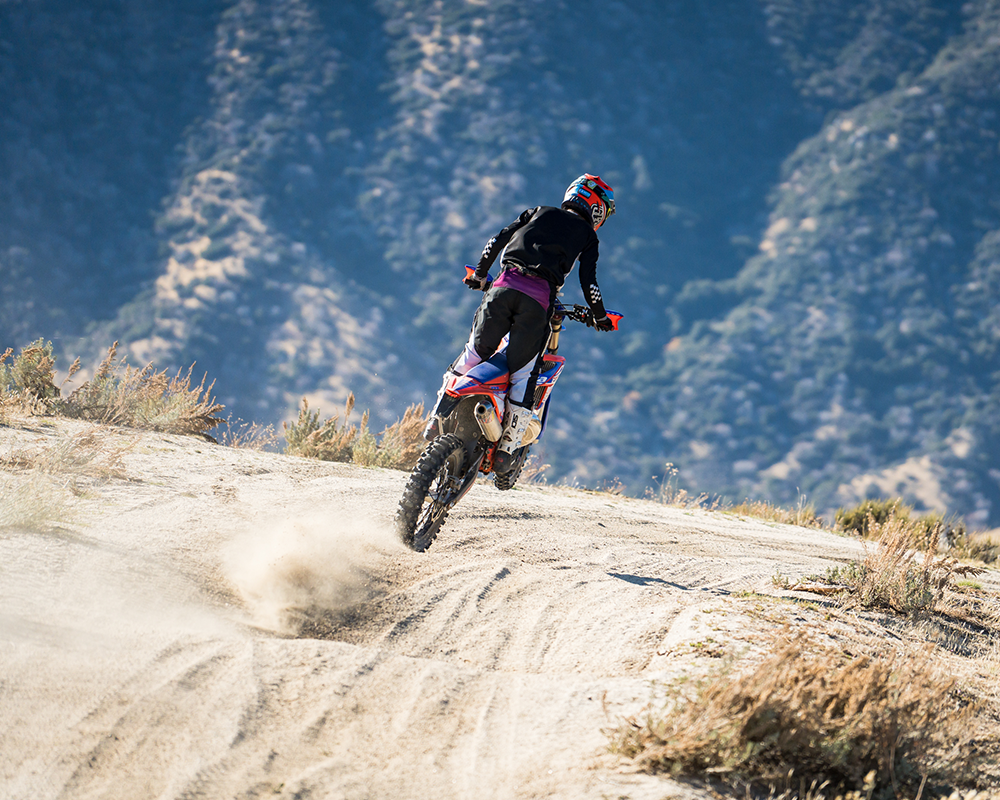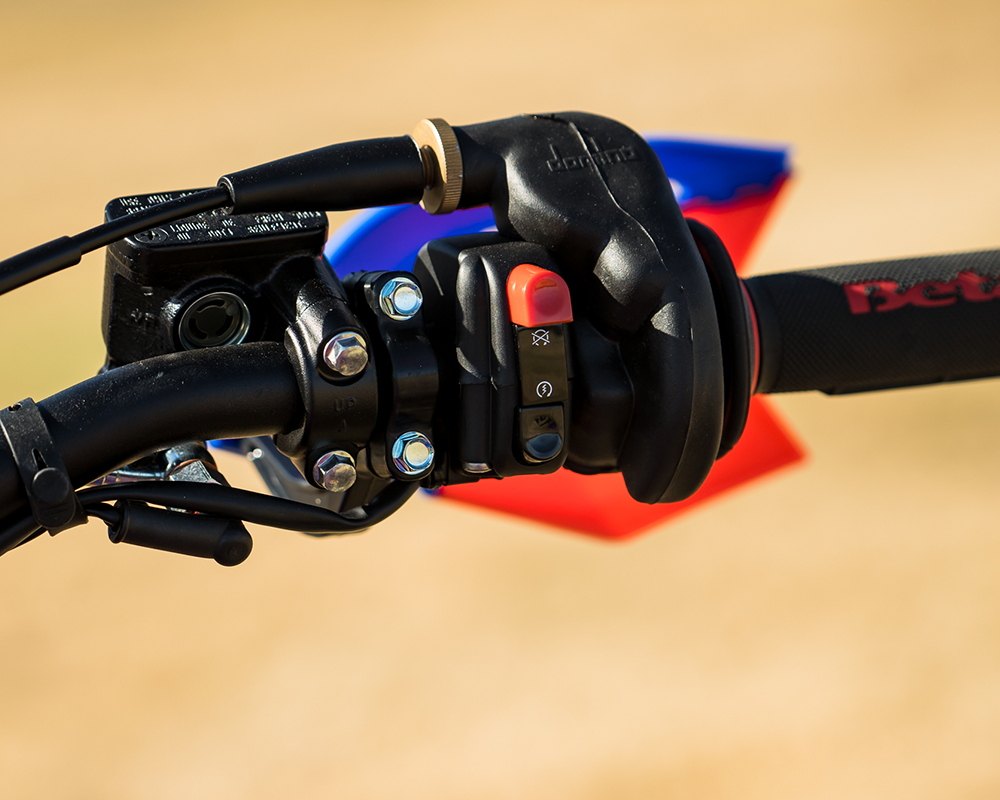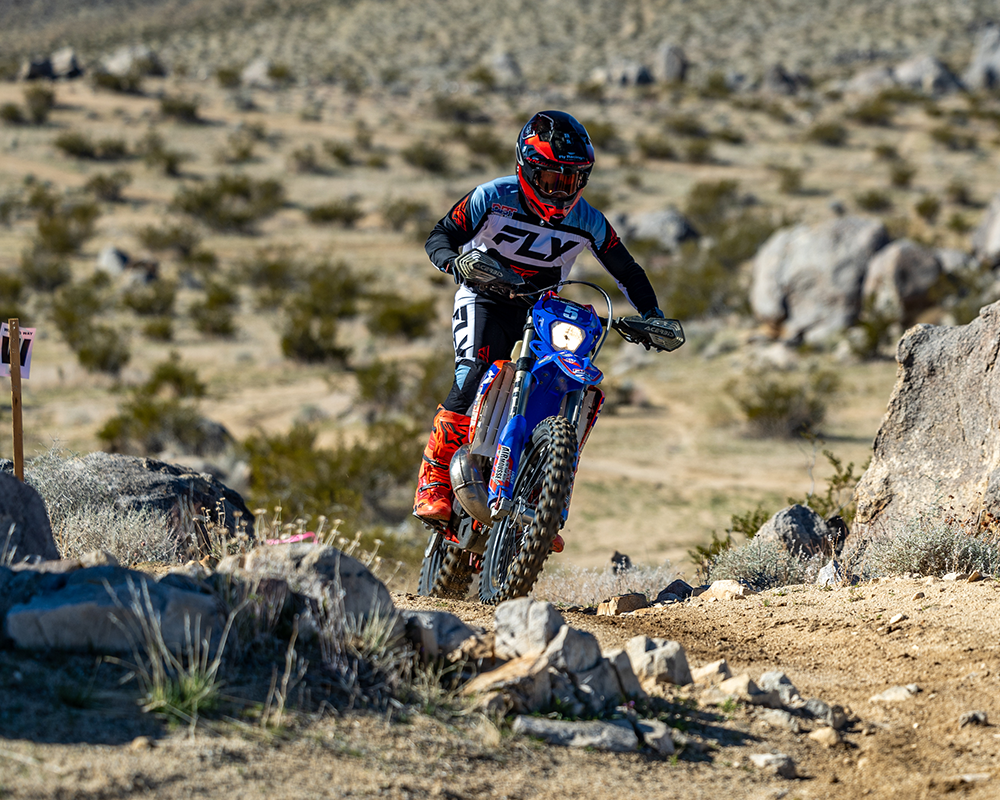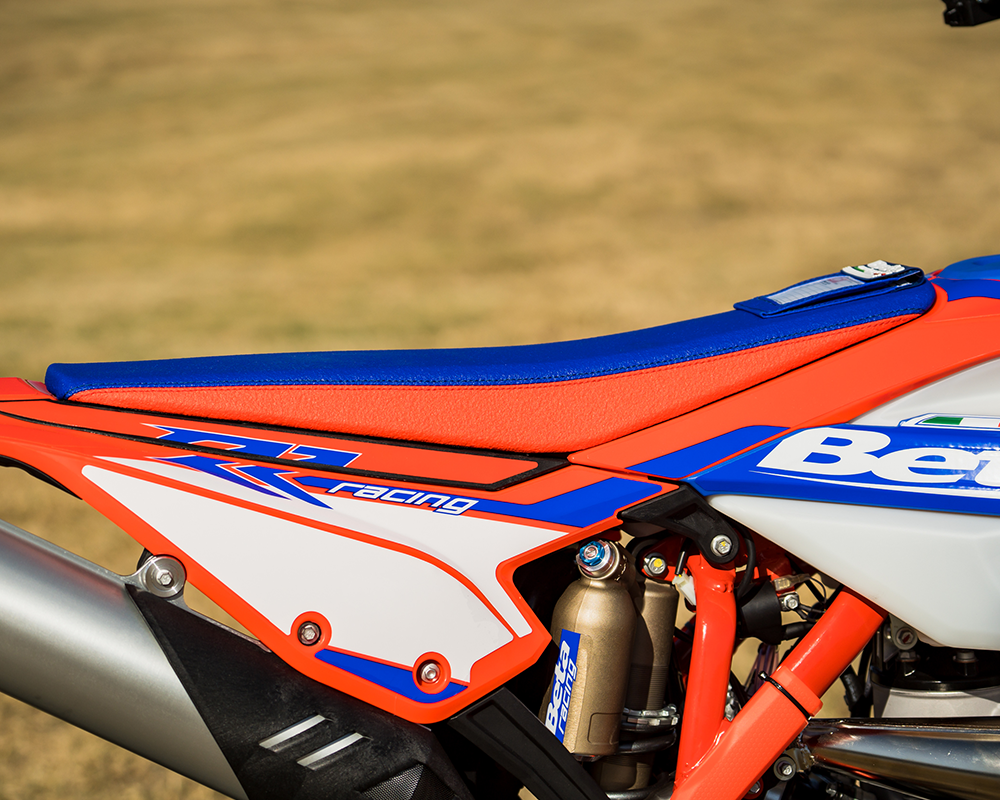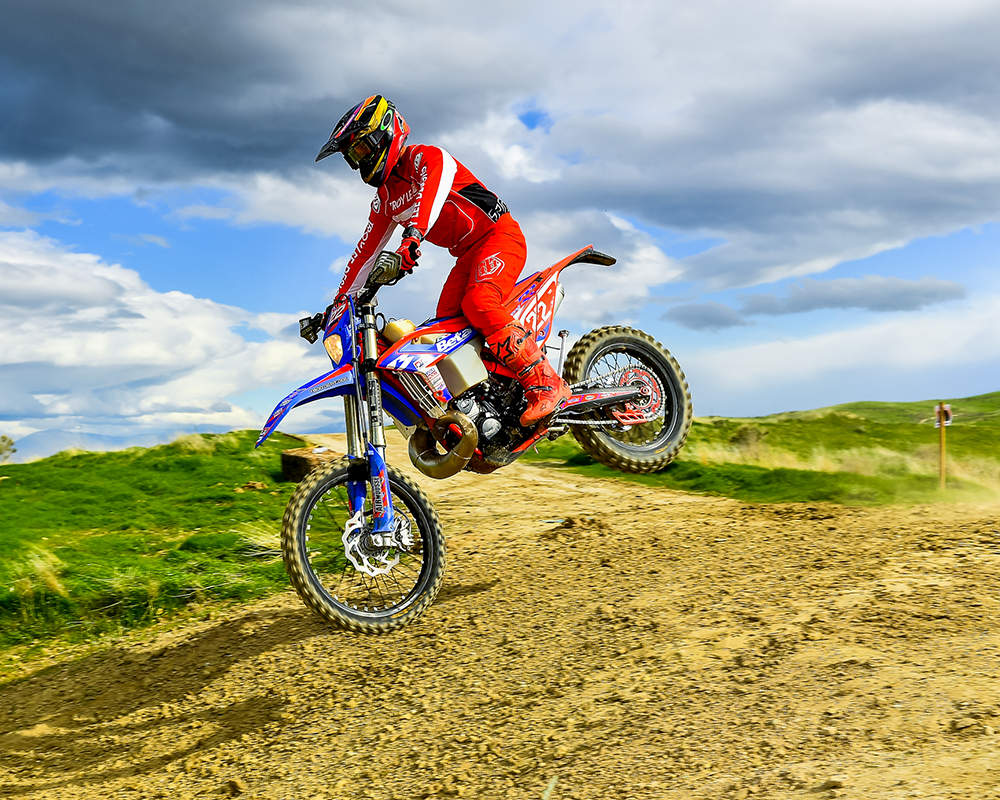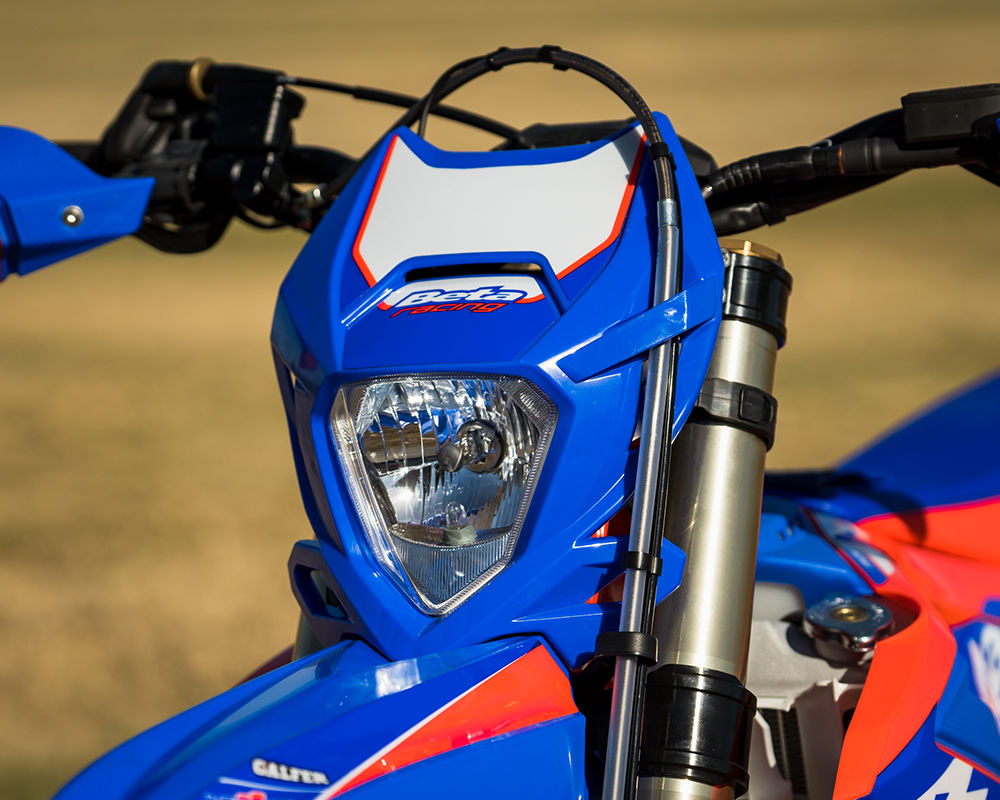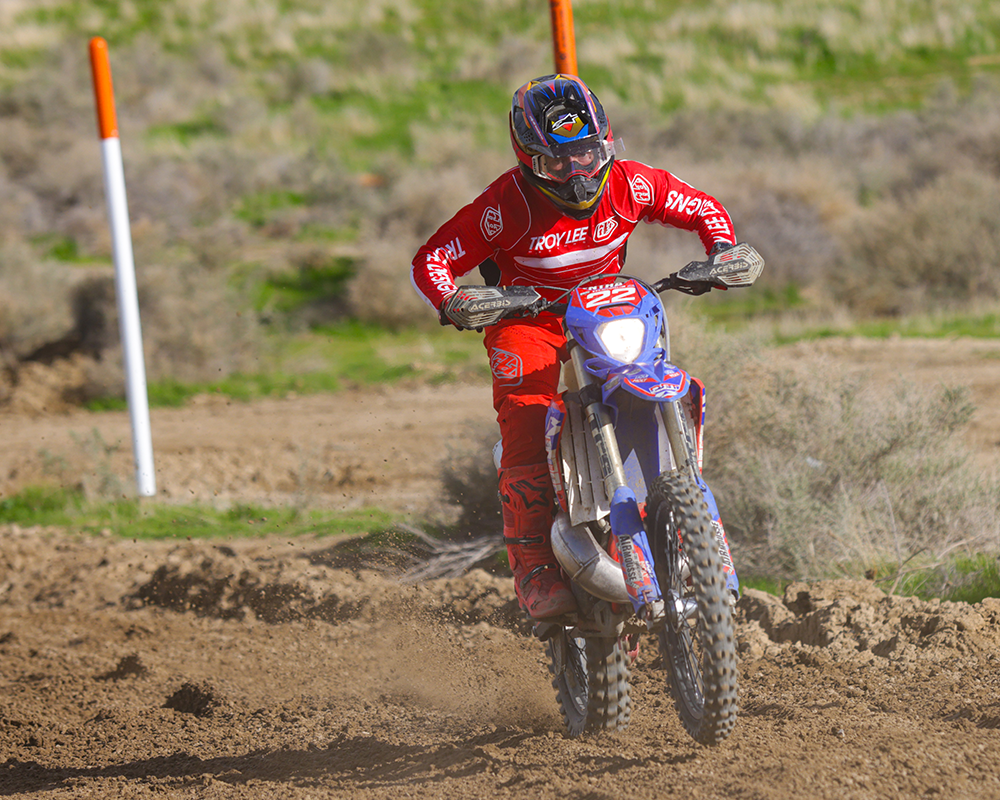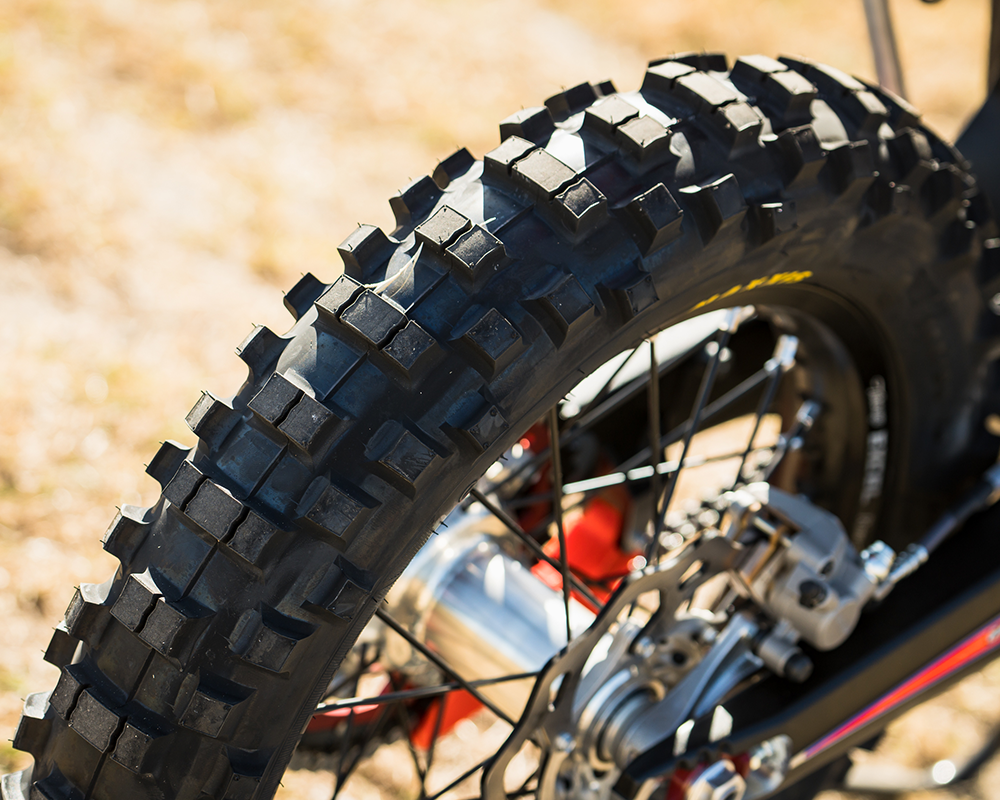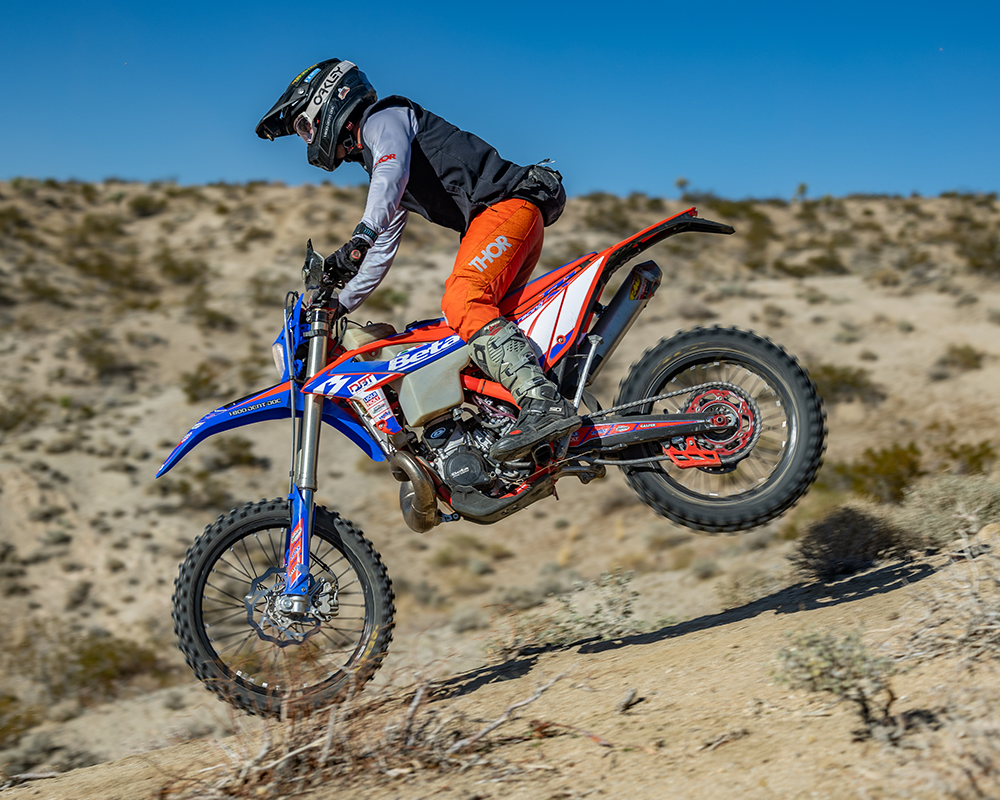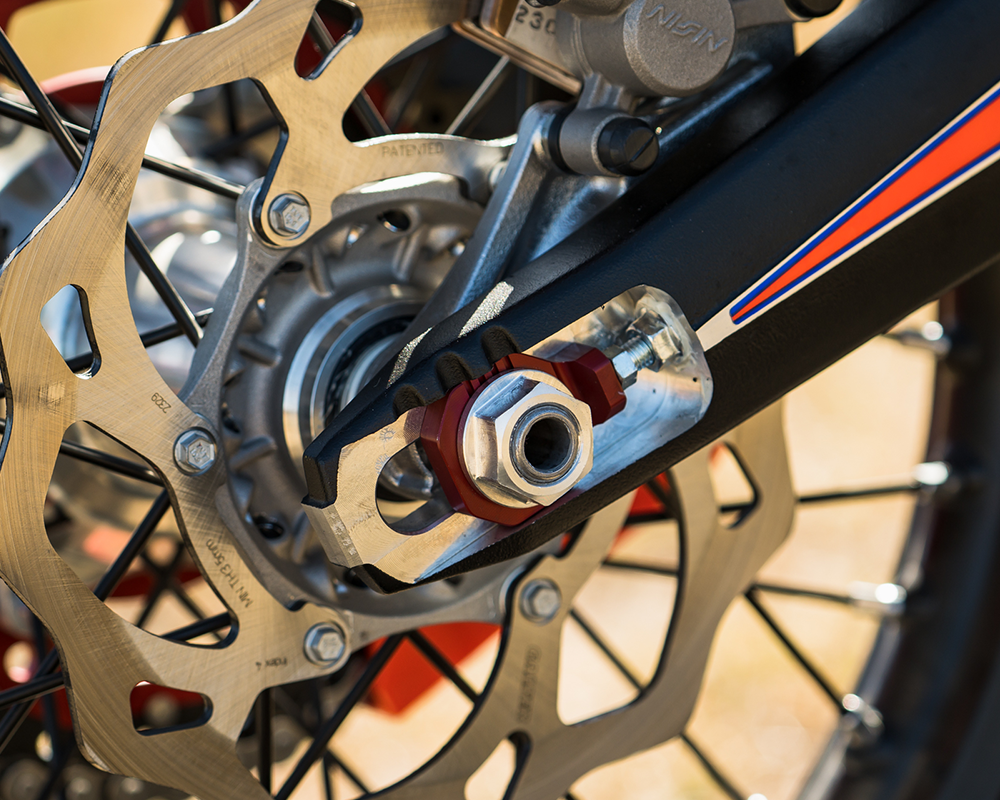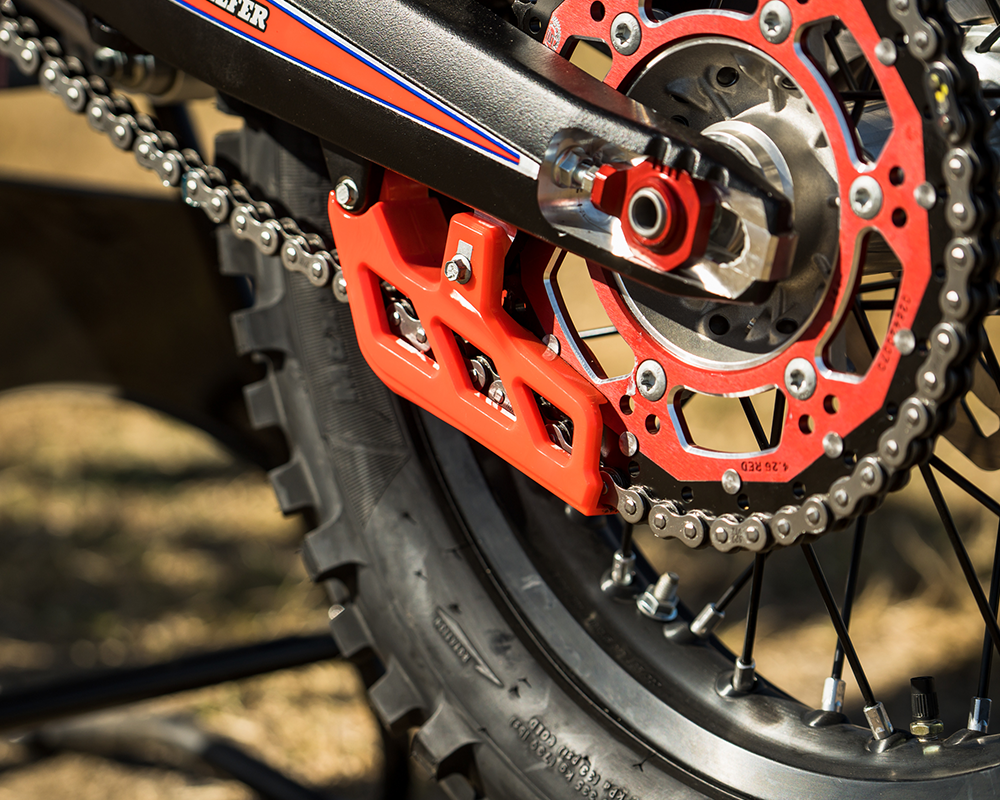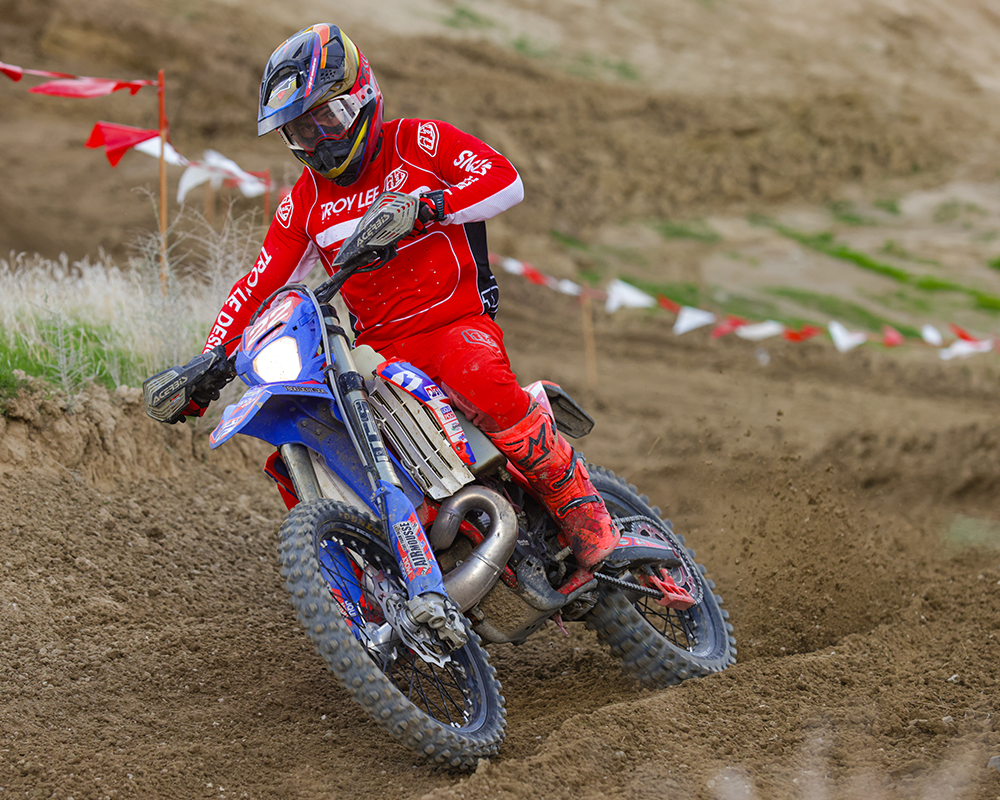2024 Beta 250 RR Race Edition
The Ferrari Of The 250 Class?
MSRP: $10,199
- The rideability of the bike is as good as any.
- Solid base platform with a strong motor, chassis, and suspension package.
- Suspension is ultra soft for faster riders.
- Some small negatives persist in the design.
Introduction
- Beta's 250cc two-stroke off-road racer.
In 2024, Beta still continues to produce a carbureted, race-inspired two-stroke in the form of its 250 RR Race Edition. Serving as their top-of-the-line off-road race bike in its class, the RR Race Edition features a lot of the bells and whistles straight out of the Beta parts catalog including items like their aluminum footpegs and quick-pull front axle, KYB suspension front and rear, and the lack of an oil-injection system (the bike takes premixed gas the old school way).
Changes
- Increased rigidity in the head tube area.
For 2024, the biggest change to this model is the updated frame. Beta made some refinements to the head tube area of the frame for added rigidity and stiffness. The changes were aimed at improving turning stability and reducing flex under heavy loads. Additionally, Beta implemented some new colorways in the plastics with more blue than ever before, resembling the SX factory bikes.
Power
- Smooth, torquey power.
- Strong bottom-mid range.
- 6-speed transmission has a wide spread.
- Two different maps offers a standard and mellow power delivery.
Beta’s 250 RR Race Edition power output is good. Will it knock your socks off and leave you in the dust? No, but it gets the job done and for most riders, it is as close to a perfect power delivery as you can get. It starts with minimal hit, but rather a smooth and torquey pull off the bottom that carries into the mid-range. As the RPMs increase, the Beta falls flat and doesn’t have quite the overrev that you’d expect out of a two-stroke race bike. In some races, we experienced it has slightly less pulling power than that of a YZ250, but it’s close enough that the rider will make the difference and the small percentage points it’s down in pulling power will be more than made up in more technical terrain.
In simple terms, this bike runs like a 300cc two-stroke but without that extra torque and hit down low. Some of our testers preferred this engine package over the Beta 300 RR due to its slightly mellower bottom end and more “Rideability” in stock trim. The electric start fire instantly and is welcomed both on the start line and on the trail, making dead engine starts a breeze.
The Keihin carb felt jetted correctly and was hassle free being less finicky than others. This bike, and some of the other Beta two-strokes we’ve been testing recently, are quite astonishing at how low they can lug for a carbureted bike. They rival that of the fuel-injected two-strokes, but are doing so with old school technology. They can crawl up seemingly anything at the lowest RPM and they chug along without stalling, gurgling, or any hiccups.
Vibration is average – it vibrates more than a modern KTM, but less than Beta’s of 5-7 years ago. After all, it is a two-stroke and a little vibration won’t kill you – some say it adds character!
Adjusting the power valve can make the engine feel more aggressive and hit a little harder, or tame it down even more and produce rideable power. Aggressive riders and faster terrain responded well to turning the adjuster out (counter clockwise) while more technical terrain and lower level riders appreciated adjusting it in (clockwise). It doesn’t make the biggest difference, but it makes enough and is worth playing with.
The two different map modes – “Sunny” and “Rain” – are quite drastic from each other. Lesser skilled riders found peace with the “rain” mode in an assortment of conditions as it tames the overall power of the bike down quite a bit. It acts as sort of a governor and nearly eliminates any wheel spin or surges in power. More advanced level riders never found the need for the rain mode, strictly sticking to the “sunny” mode in all conditions (including in the rain/mud) as they felt using the clutch and throttle with their wrist more effective.Still, it is nice to have and we threw a few beginner/novice level riders on this bike who praised the rain mode for its “Rideability” - Beta’s key tagline with all of their bikes.
The 6-speed transmission is well received on this bike. It covers all the bases and has the low end to tackle Erzberg like terrain while still maintaining the top end to run up at the front of a desert race bomb run. We felt the spacing between some gears was slightly tall in softer conditions or up hills, and going up one tooth on the rear sprocket helped keep the bike in the meat of the power. The beauty of the 6-speed tranny is the ability to gear it down and still maintain a high top-end speed without over revving the bike. Shifting is average but gets better with time. Beta’s have always craved fresh transmission fluid so if shifting or clutch action isn’t great, change the oil.
Suspension
- Soft, enduro focused suspension.
- KYB components are of high quality.
- Works best in slow speed rocks and roots.
We say this all the time, but it is more true than ever with this Beta – the suspension is soft. Like very soft. In the right circumstances, they work very well - some of the best we’ve ridden if we’re in more typical enduro type terrain with more rocks and roots than bumps and sand. But once you get out of that specific terrain, the stock valving shows its enduro roots and it lacks what is needed for a competitive west coast off-road bike.
If you’re maintaining speed in slow terrain (rocks, roots, small bumps), it soaks up the chatter very well and keeps the Beta tracking straight with little deflection or harshness in a balanced package. However, getting hard on the brakes, even at slow speeds, upsets the bike as the forks dive and tuck with a lot of movement through the stroke and quickly at that. Likewise, at high speed, both ends have a tendency to wallow and bottom frequently – we’ve felt metal to metal on the forks and put the bump stop on the shock to the test several times.
Going in on compression, both front and rear, helped bottoming resistance a little but also brought on some added harshness. In reality, it comes down to needing a re-valve to suit faster riders on faster terrain. We’ve ridden on these components in the past and have no doubts we can get them working well with just a simple re-valve and the correct springs, they just aren’t set up for our intended purpose with this bike and that includes west coast desert and grand prix style racing.
Chassis - Handling
- Improved handling under heavy front end loads.
- Feels lighter than its scale weight.
- Friendly rider triangle accomodating to most riders.
In years past, we’ve liked what the Beta chassis brings to the table and how it handles. It’s one of those bikes that does it all pretty well. It turns pretty good, has pretty good stability, and even has good bump absorption. All characteristics you’d want in a bike. However, one area that lacked with the Beta is when ridden aggressively, the softer natured chassis became more apparent and when the front end is loaded (under heavy braking at speed or through bigger bumps), we’d get a nervous feeling front end with an unsettled, twitchy front end. With the updates Beta made to the head tube area of the chassis, those feelings have been mitigated
The Beta’s scale weight has never matched up with what is felt on the trail and we feel that continues with this machine. It is very lively and responsive, yet feels planted for a 250cc two-stroke.
The cockpit on the Beta is accommodating to most riders with a very flat seat profile and a spacious rider triangle. The stock seat is rather uncomfortable, and switching to an aftermarket foam works wonders on this bike. On a side note, the push button seat is great being simple to use and very effective.
The Nissin brakes on this bike are about average. We never had any issues with the front brake fading or feeling spongy, it just worked. On the other hand, we struggled with the rear brake fading quicker than normal and we could never get it to feel firm. If you like having some modulation in the rear pedal, this will suit you well but we could never get it to work quite as strongly as we’d like. The Brembo hydraulic clutch worked well and there were zero issues with it along the way.
The stock Maxxis FIM Enduro tires simply don’t work great. They lack traction and add harshness on both ends with a stiffer feeling tire. Maxxis makes great tires, just not these ones. Quickly changing out to your favorite set of tires will work wonders with this bike.
The air filter design, while it is toolless, isn’t as good as a KTM. The airbox is a tighter squeeze, and the moving tab that cinches down the filter cage is a bit finicky, especially when you’re learning how and where to position it the first few times you change a filter. Additionally, we found it best to run our fingers around the rim of the filter once installed to make sure it did properly seat in its place. More than a few times we found an edge to be slightly misaligned or not fully sealed which could lead to issues down the road. It’s not a terrible design, and much improved from the design on the ~2017 era Beta’s, but it could use a little refining to be more user friendly.
While it should be common practice, regular nut and bolt checks go a long way on this bike. In particular, we found subframe, shifter, and rear shock bolts all came loose on more than one occasion. Putting some blue threadlock on these didn’t hurt and helped keep them tighter for a longer duration.
We have had great durability with Betas in the past. Racing them in 24-hour events with no failures and impressed with 300+ hour teardowns on a 300 a few years back. Some of the weight is in fact helping this bike out here. Things like a robust electric starter may weigh more but they also last longer. Cases are a little thicker, some gears are a little heavier. This is a balancing act and most would argue that it is worth the weight if you need longevity. However, there are some things that have been weak points in the past and Beta is doing something about them. Take the sub-frame for instance. It is and so far acts stronger. Parts like the chain, levers, wheels, and bars are all robust and took all of our abuse without an issue.
Conclusion
- Sloid contender in the 250 class with a strong overall package.
- Like most bikes, it can benefit from a few personal refinements.
How good is this bike? Is this the best bike ever? That’s up to you to decide, but we’re here to tell you that it’s a serious contender. It may need some more refining as an overall package to be off the showroom floor ready to race like a KTM or a YZ, but even those bikes have their quirks and setbacks. This newest generation Beta took a step forward with the updated chassis, and items like an electric start and a 6-speed transmission are irreplaceable when looking at a bike like the YZ250X. We’ve spent several race weekends in the desert and grand prix’s racing this bike in near box stock trim (tires/mousses and a gas tank being the only mods) and have had great success.
With some simple modifications that most will do anyways (suspension re-valve, pipe/silencer, stabilizer,etc), we feel this bike will be ultra competitive at the highest levels of off-road racing.
Recent Product Tests
Leave a Reply
